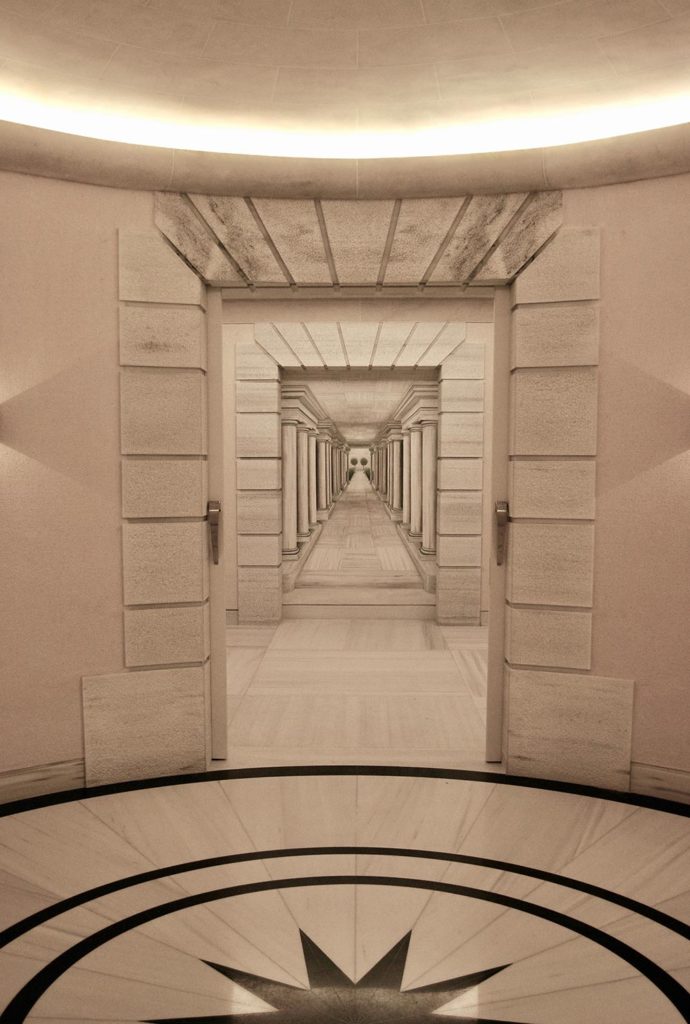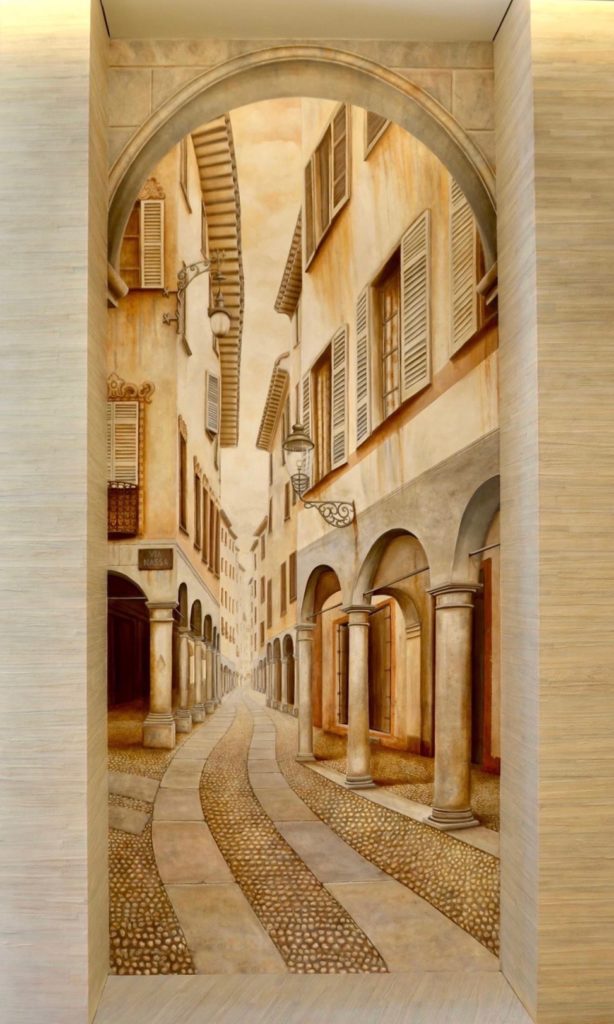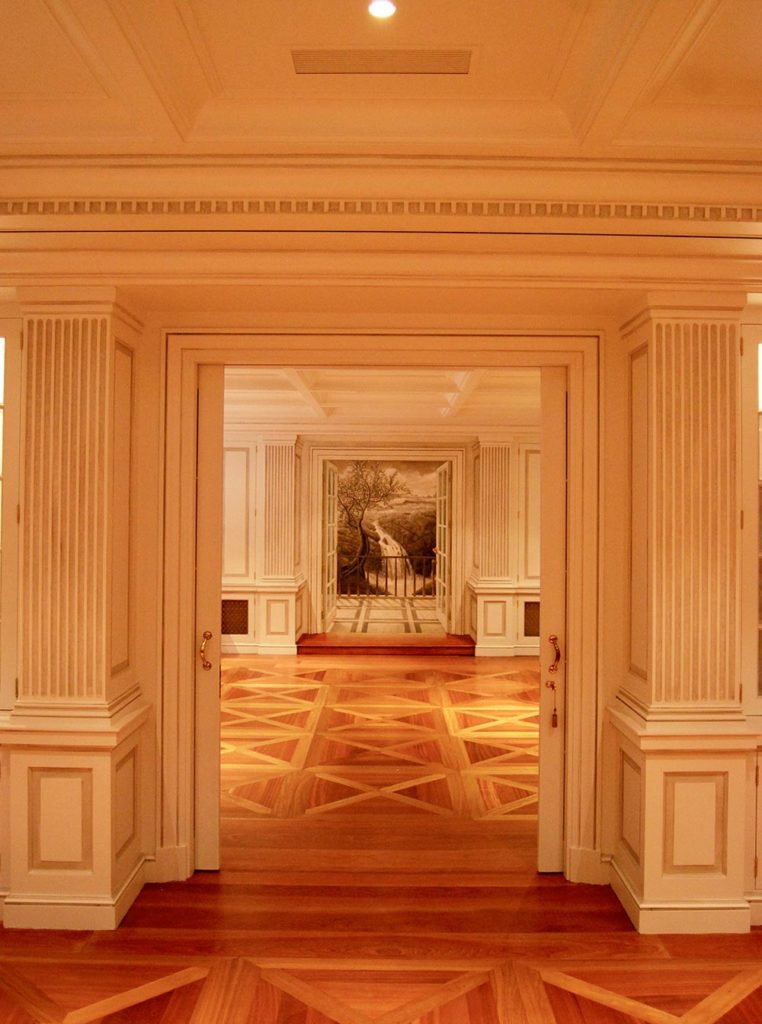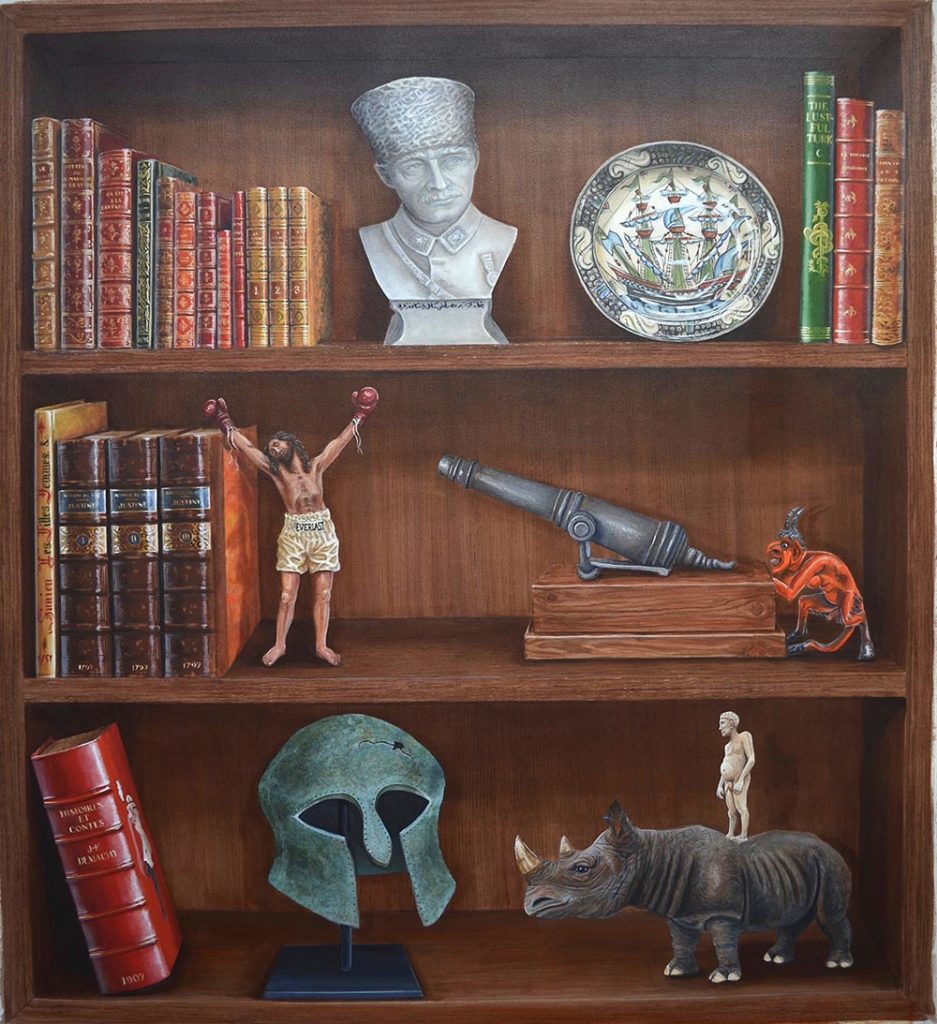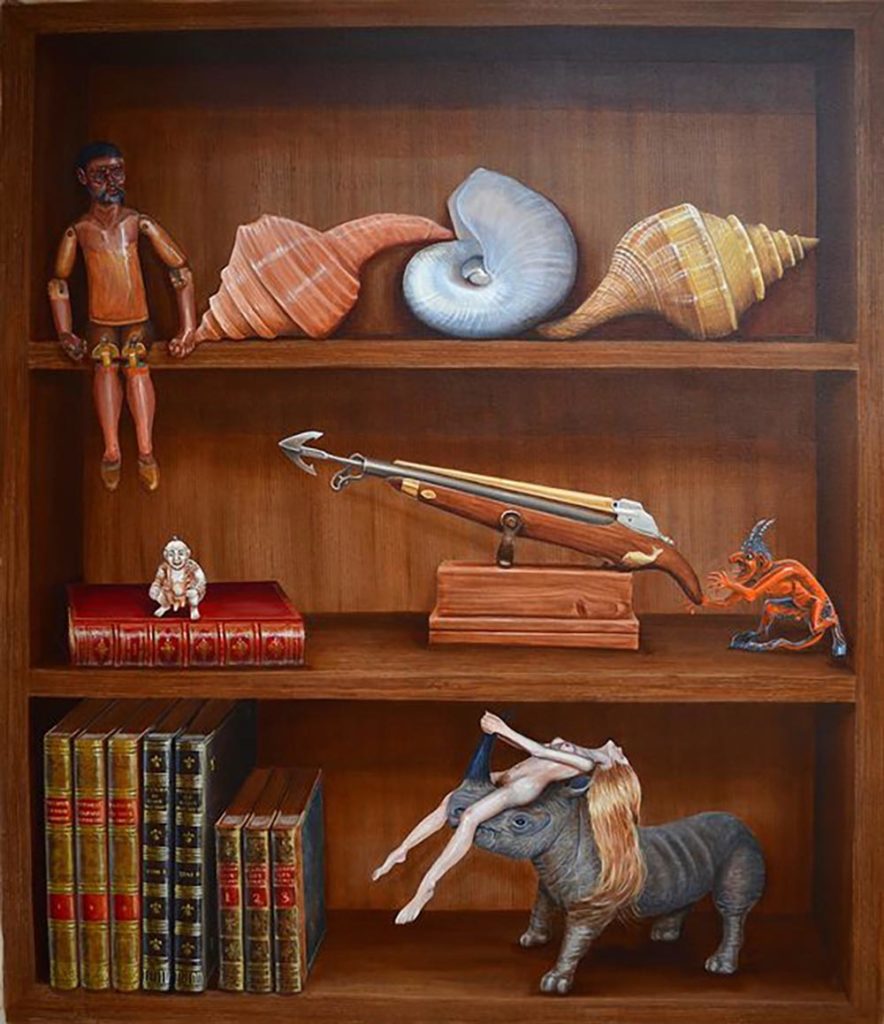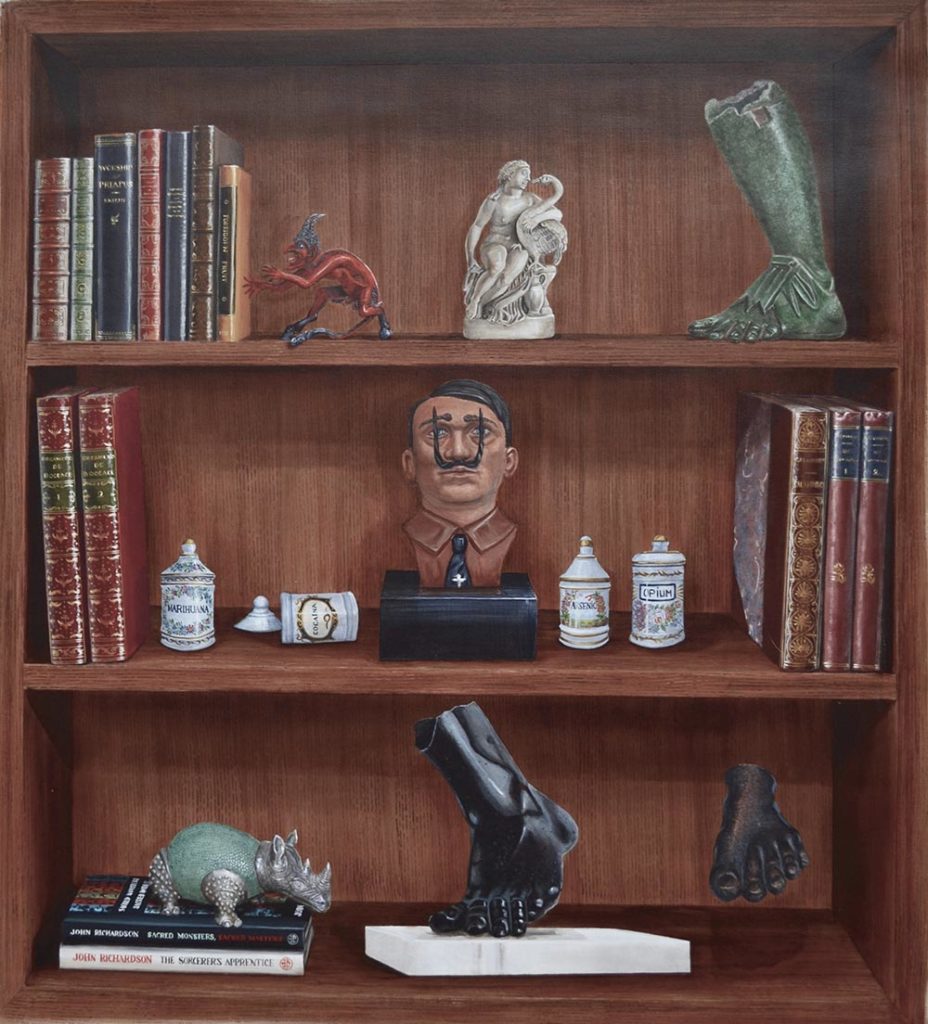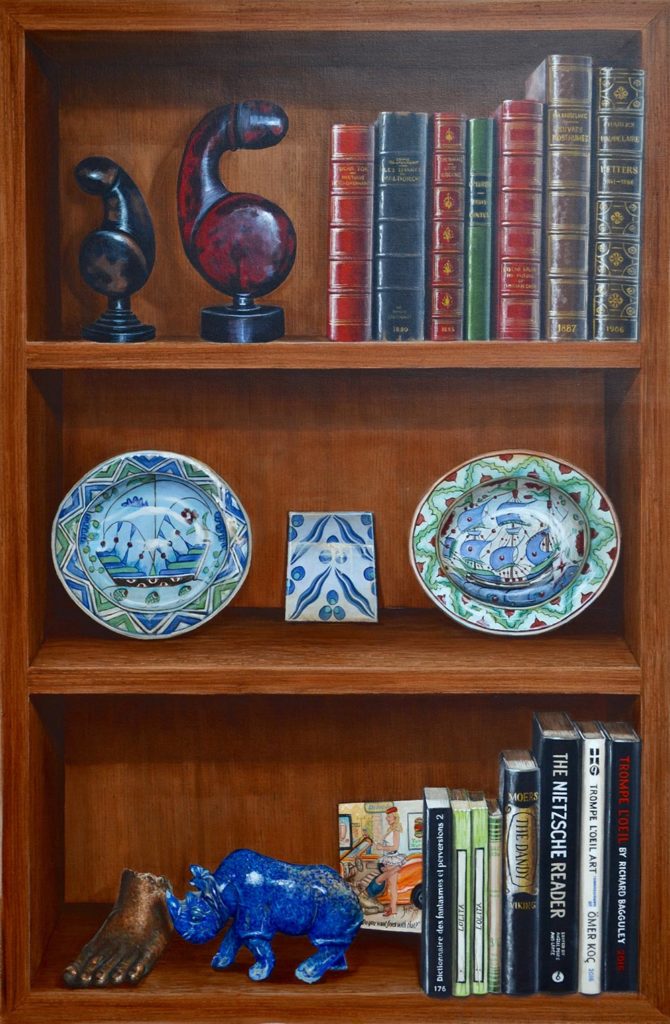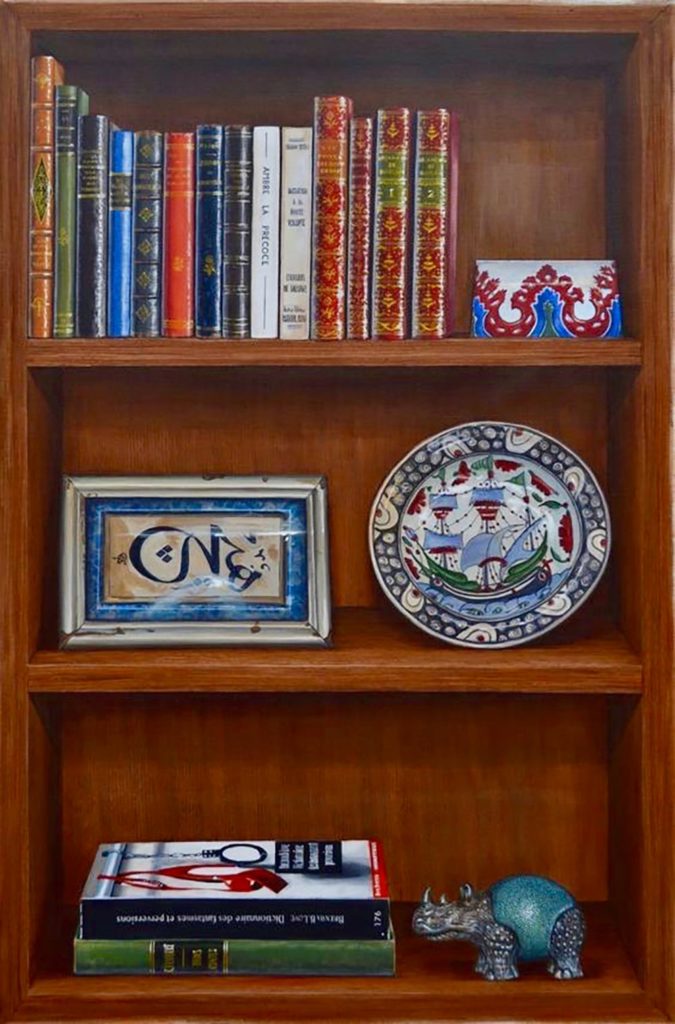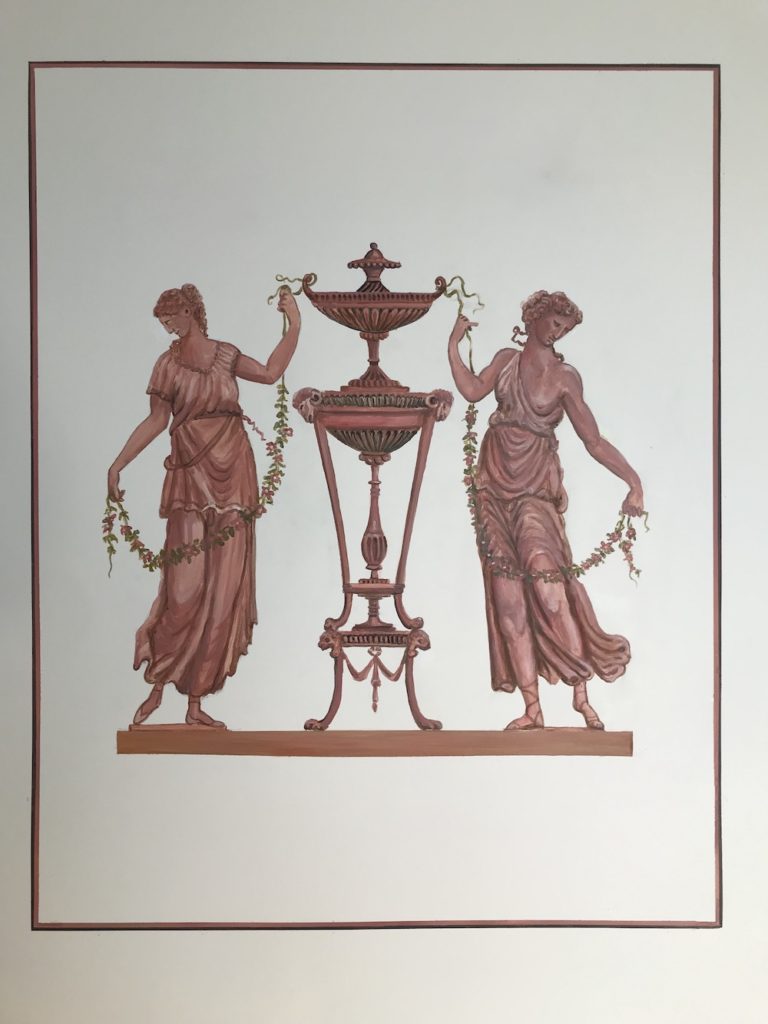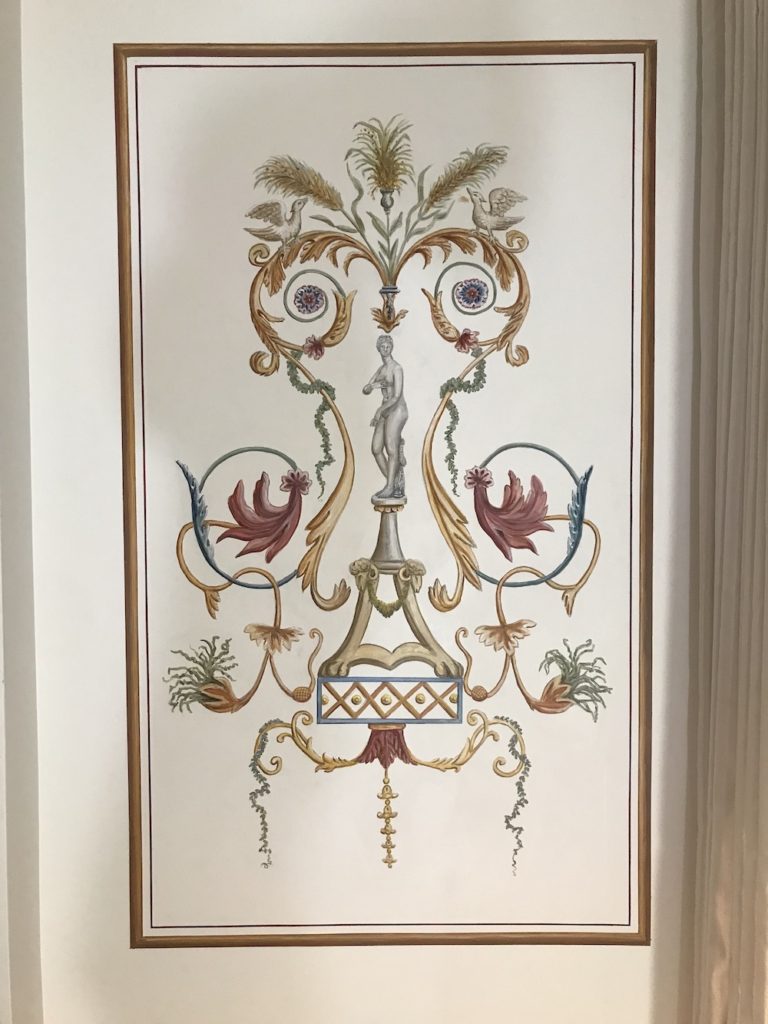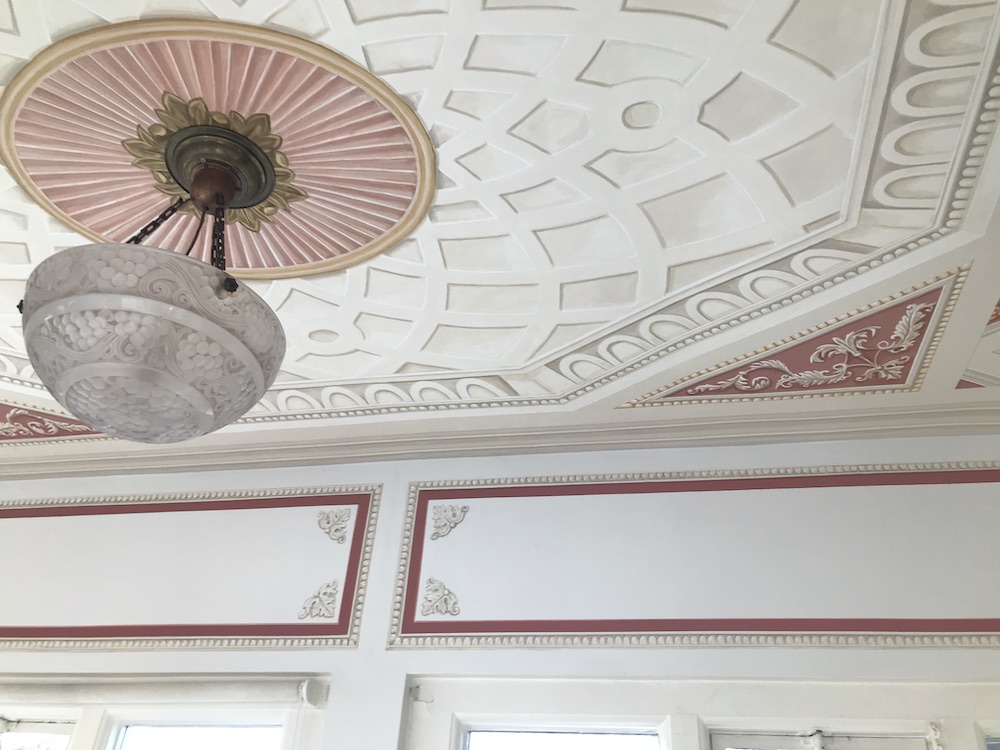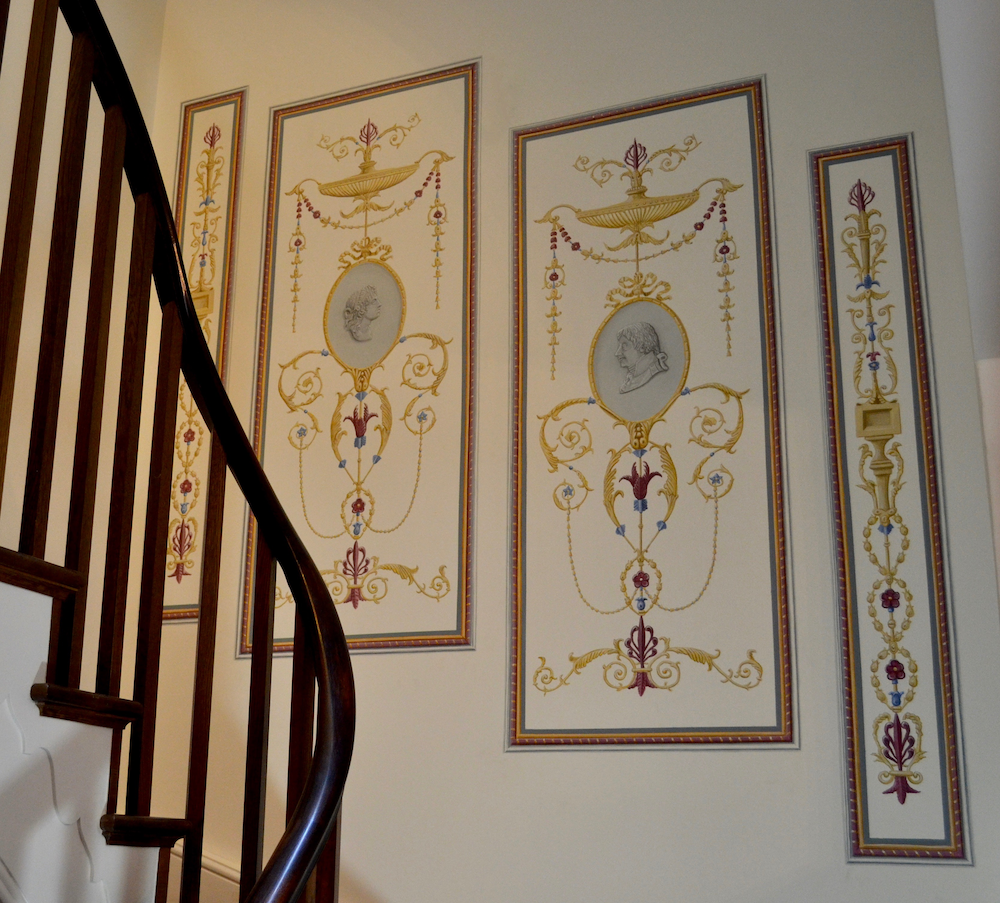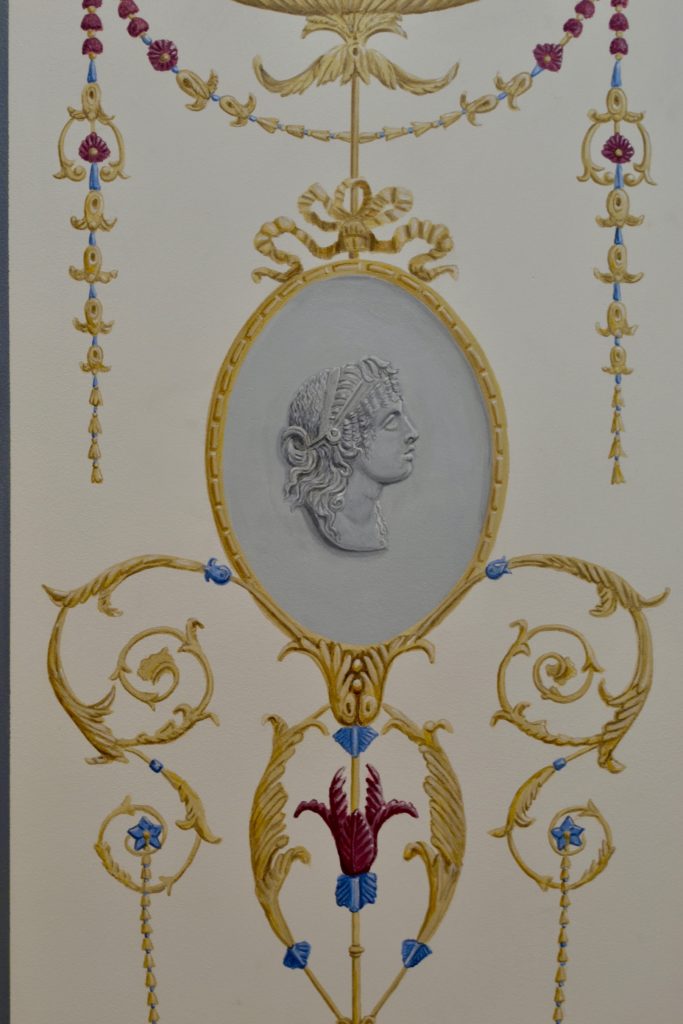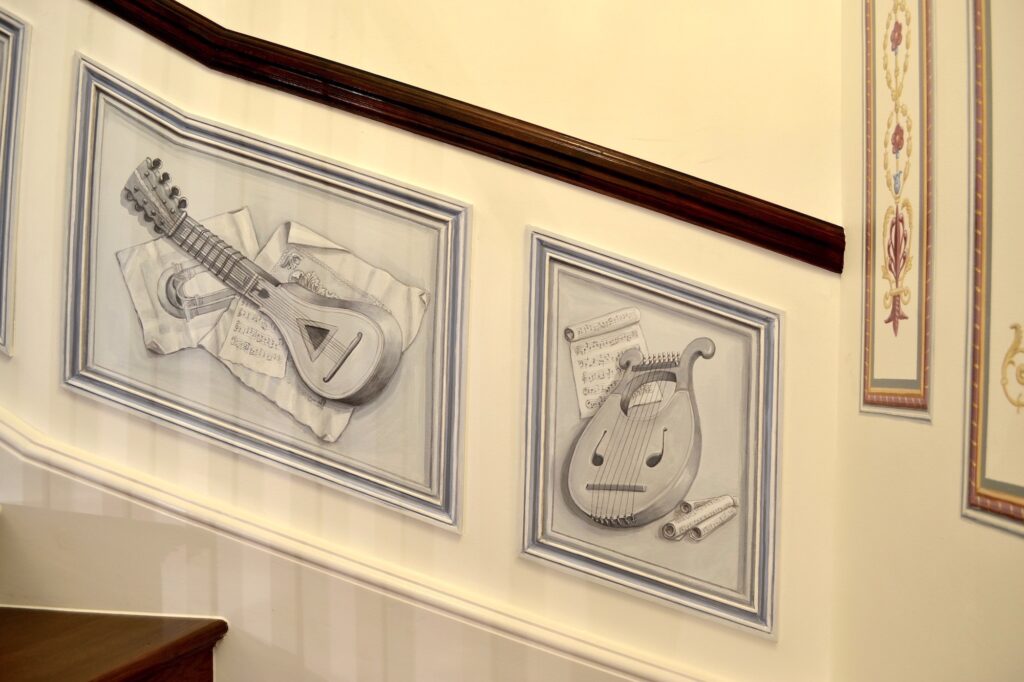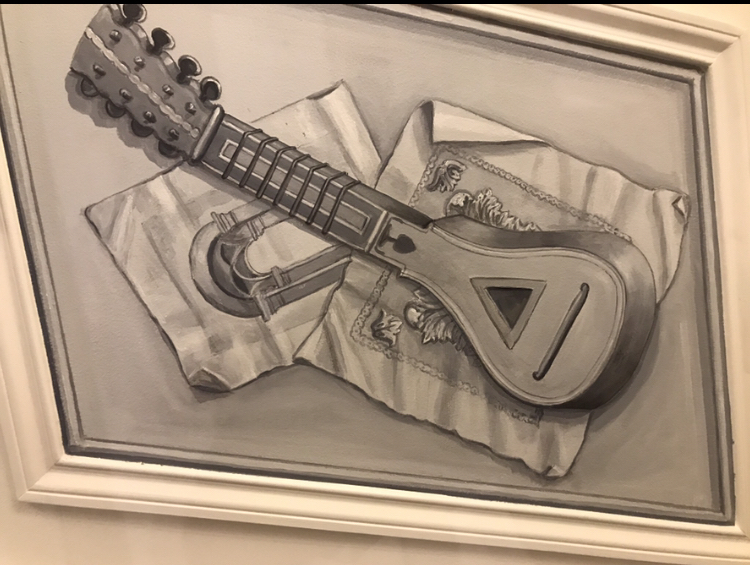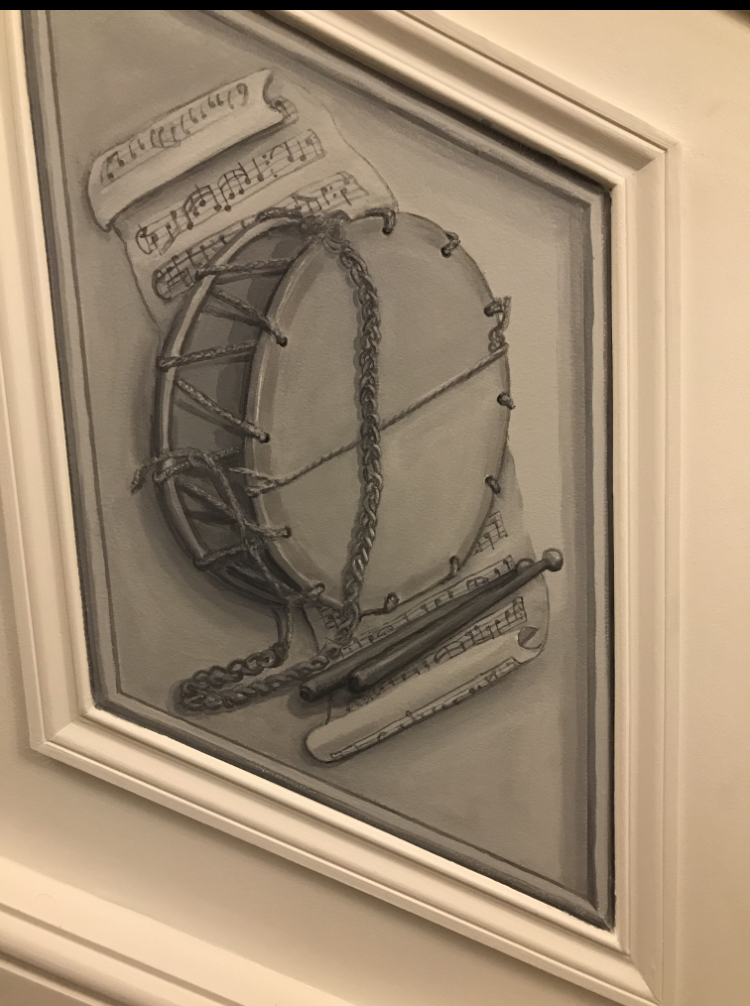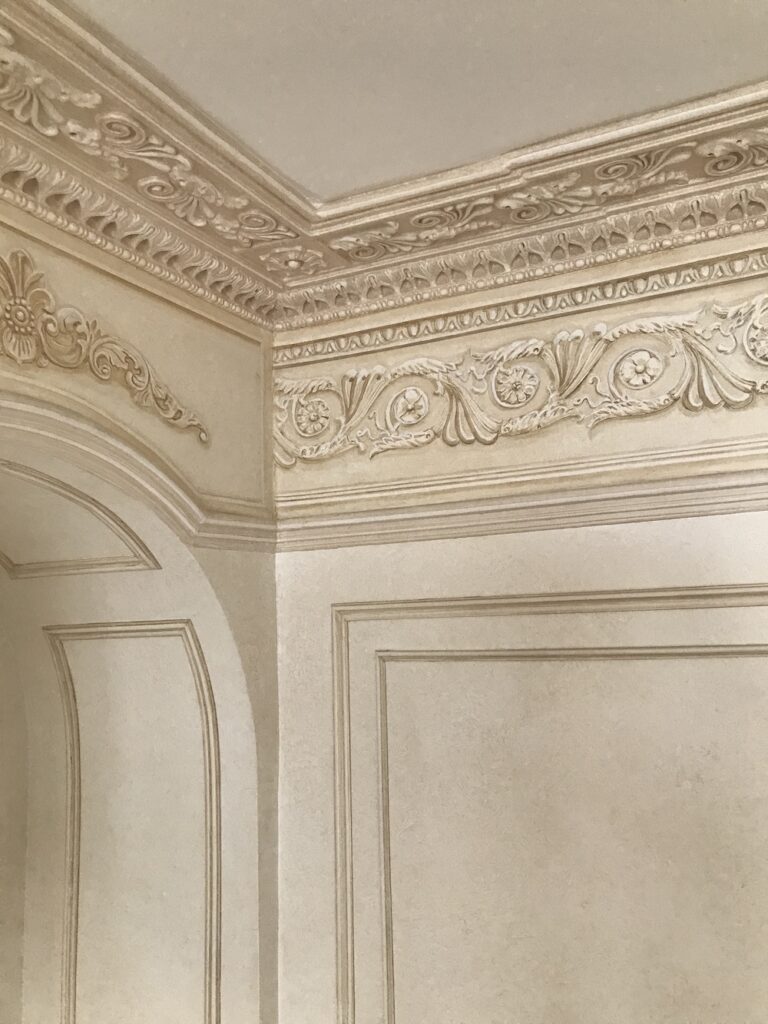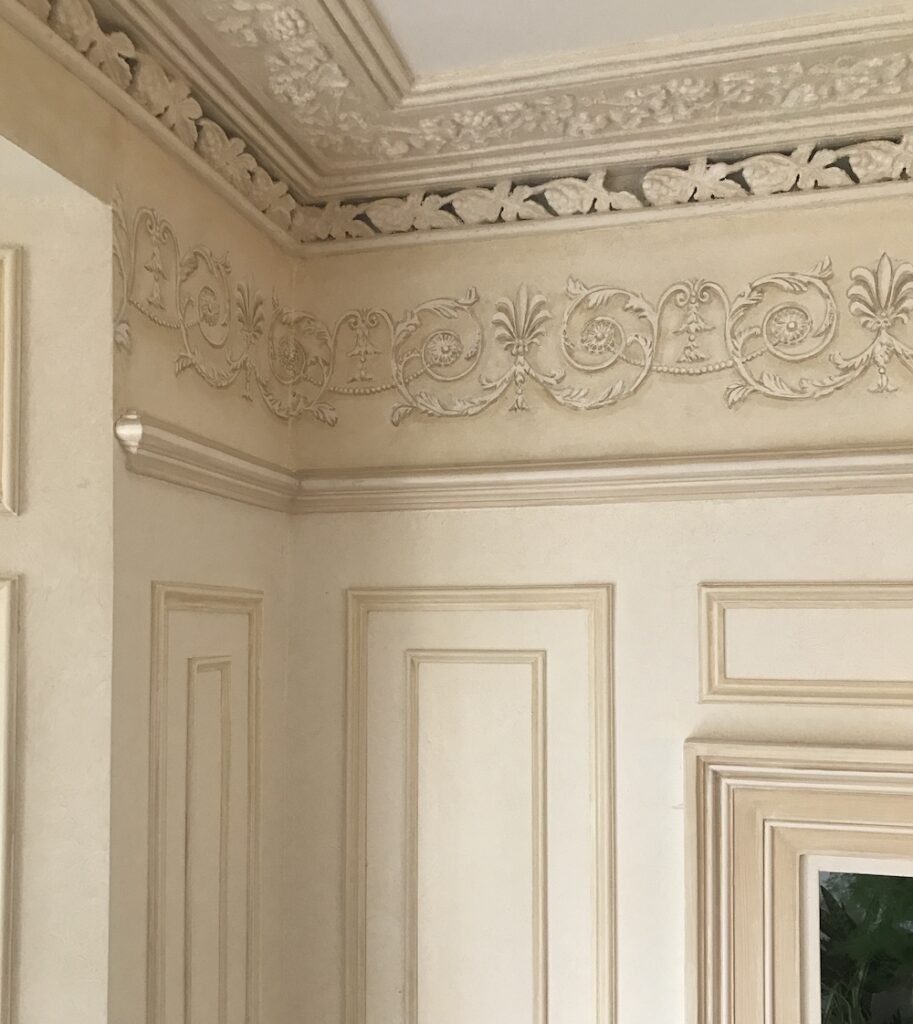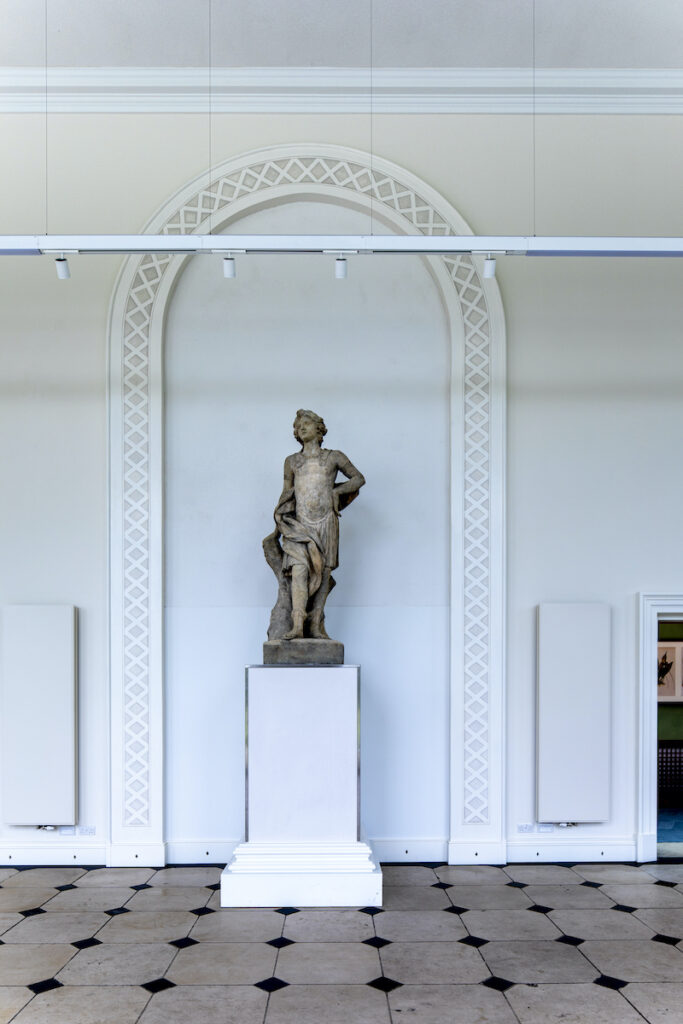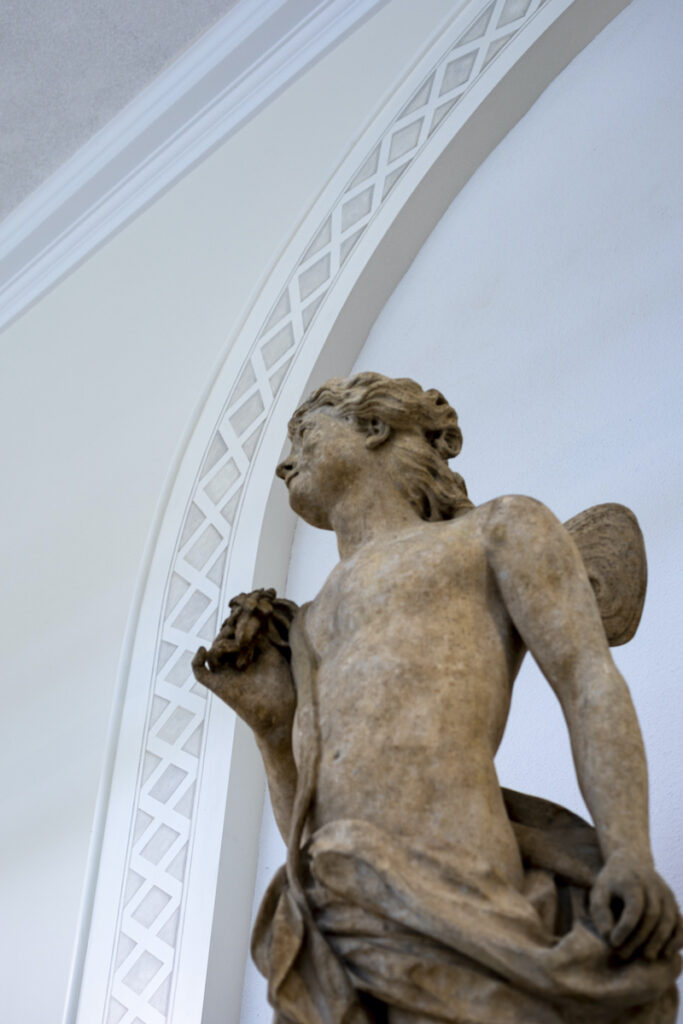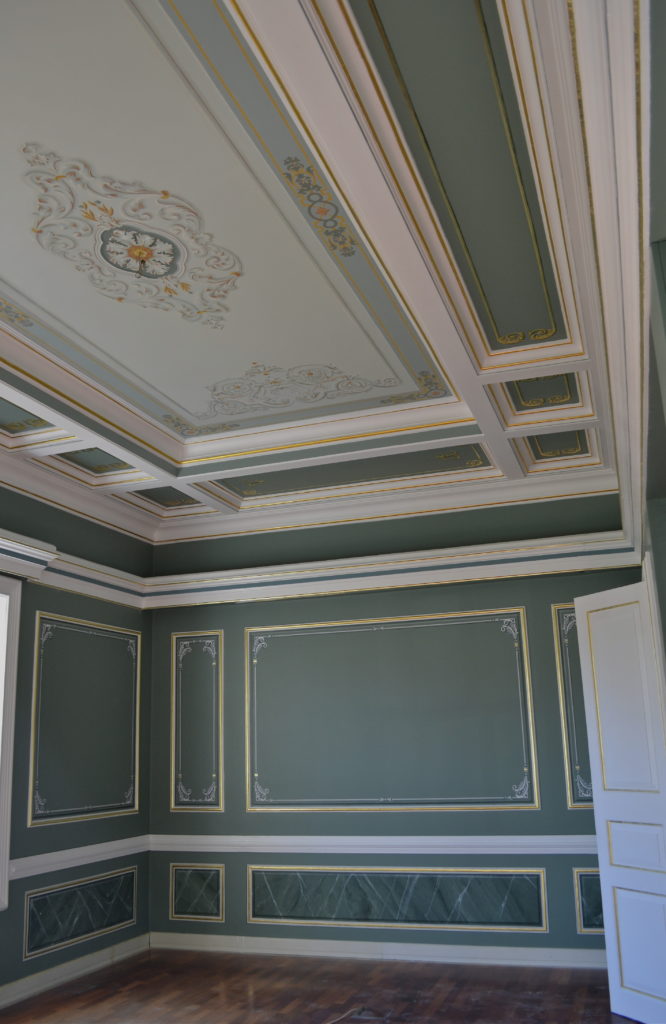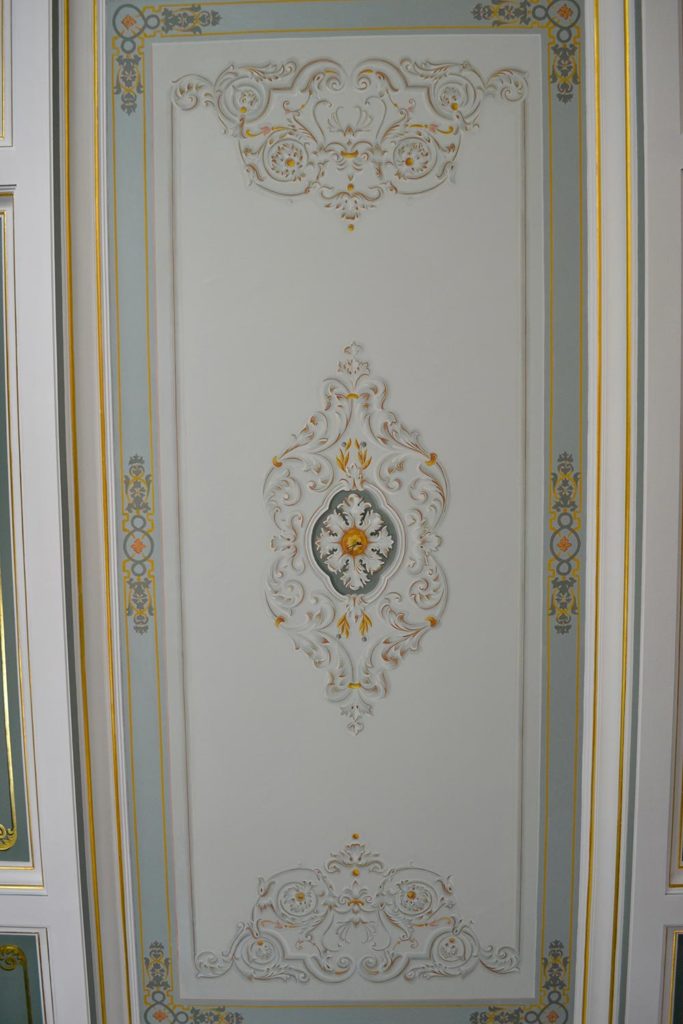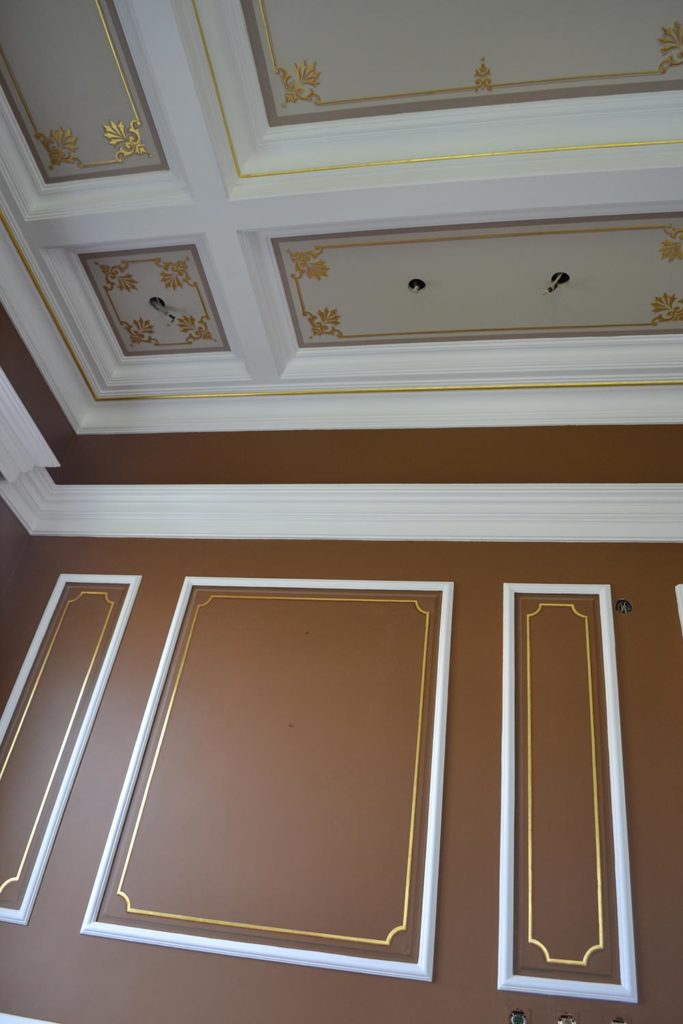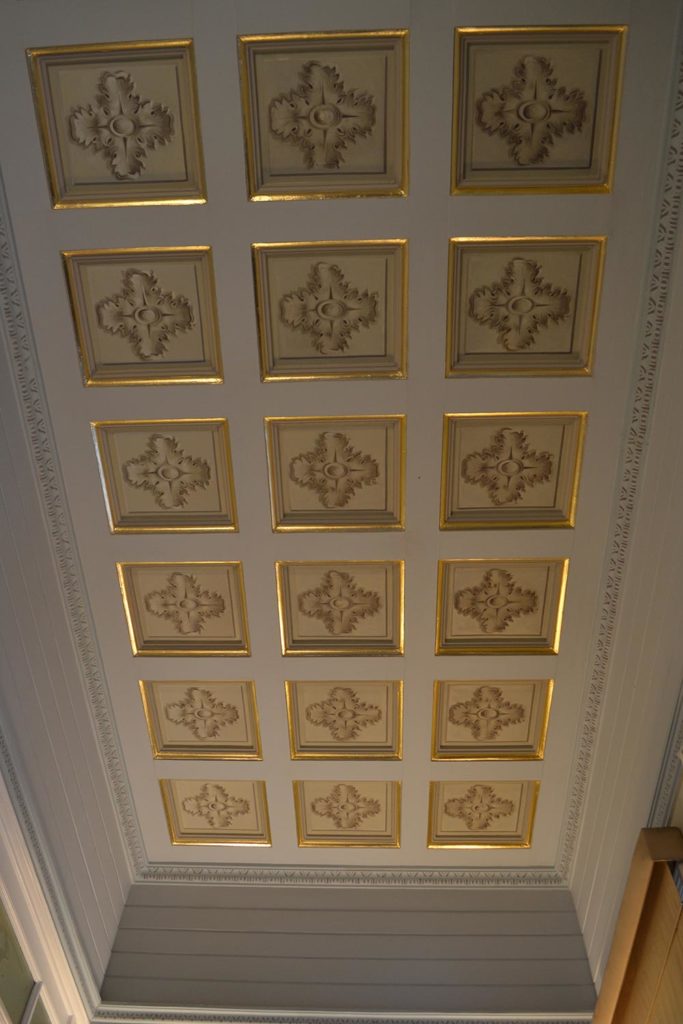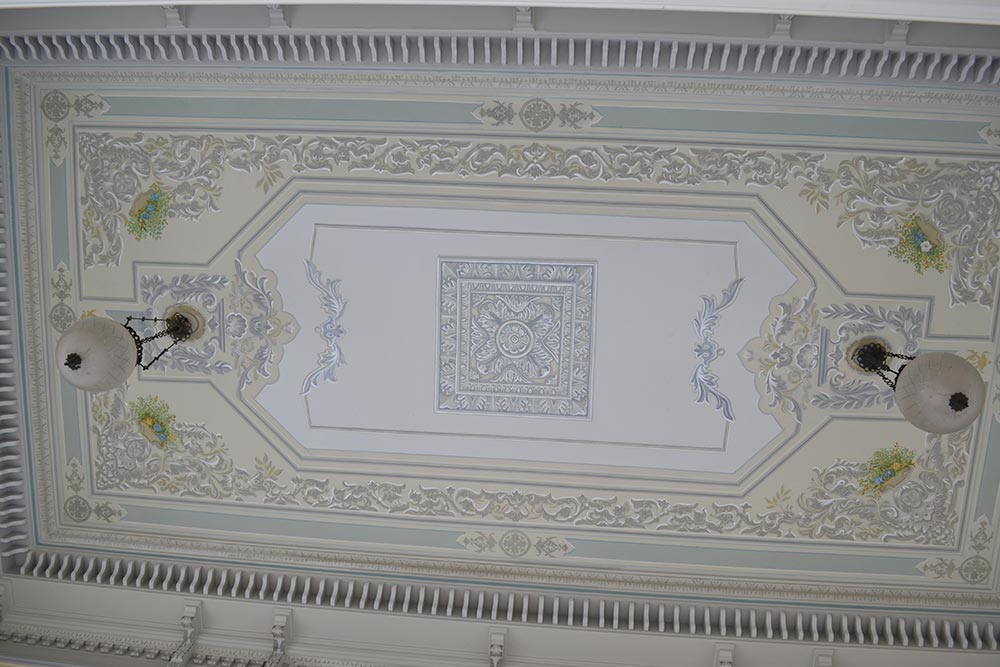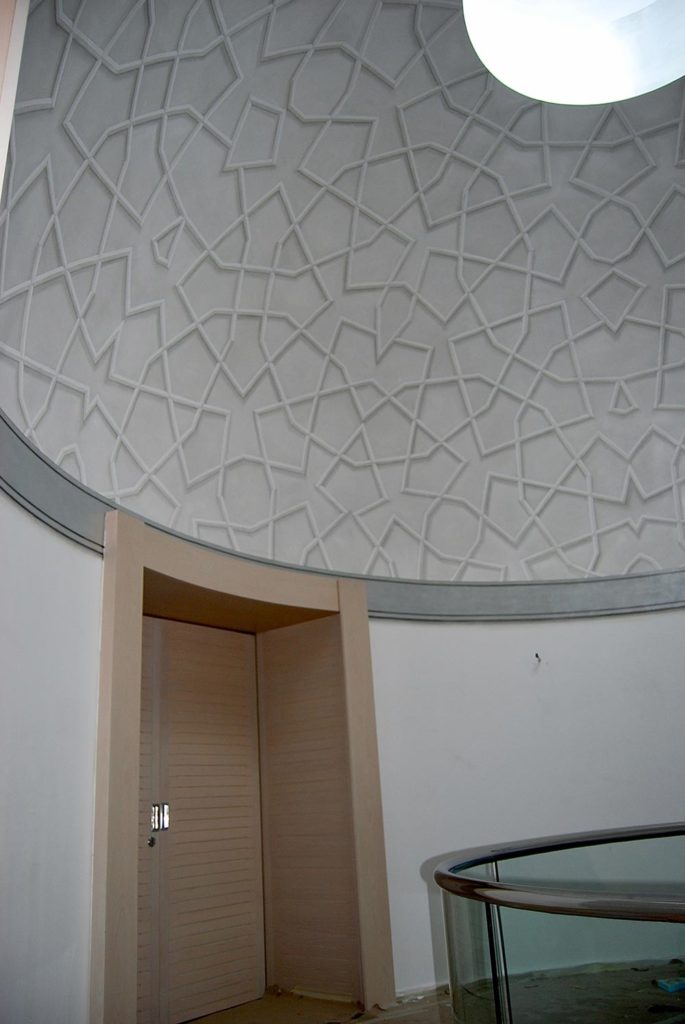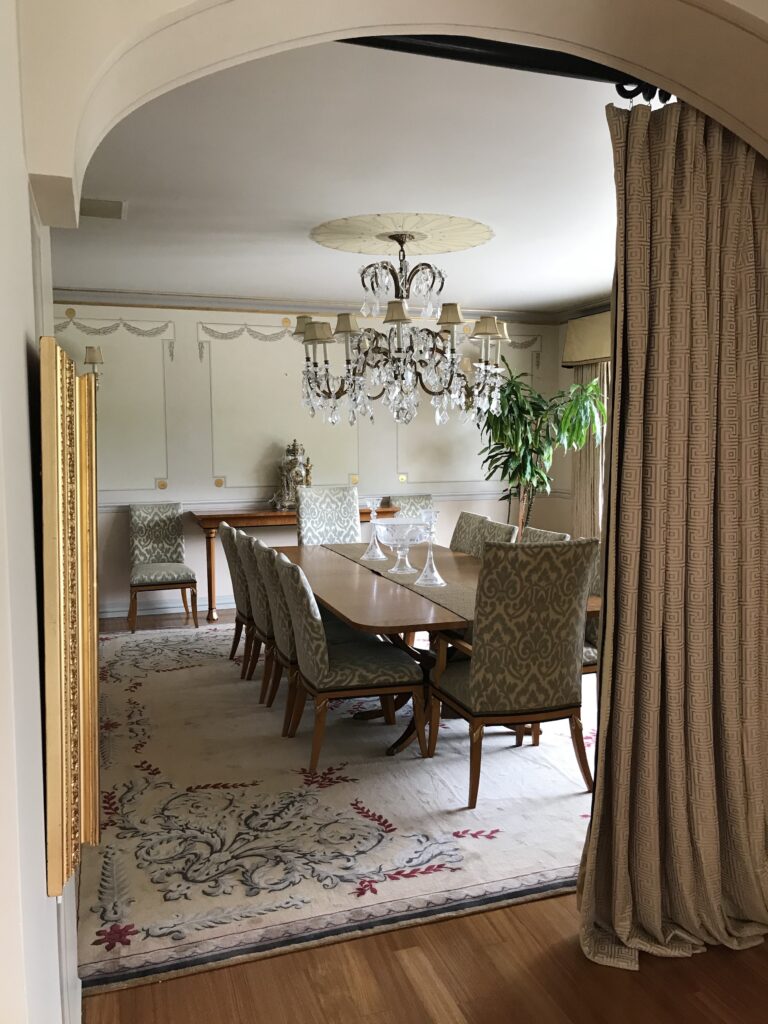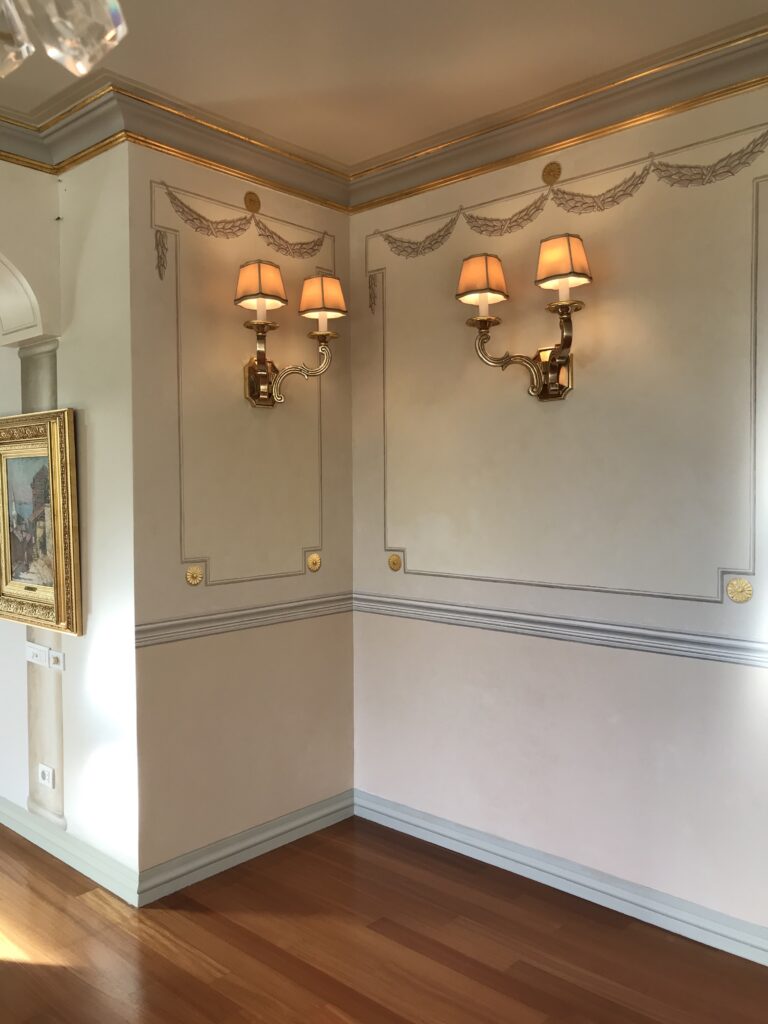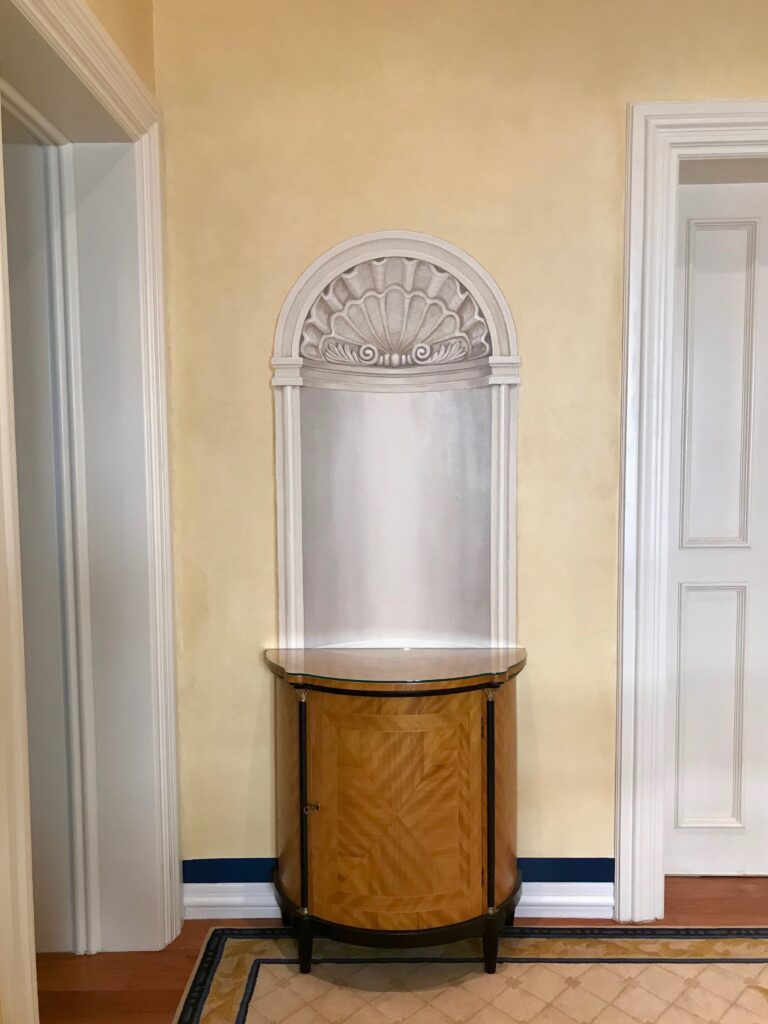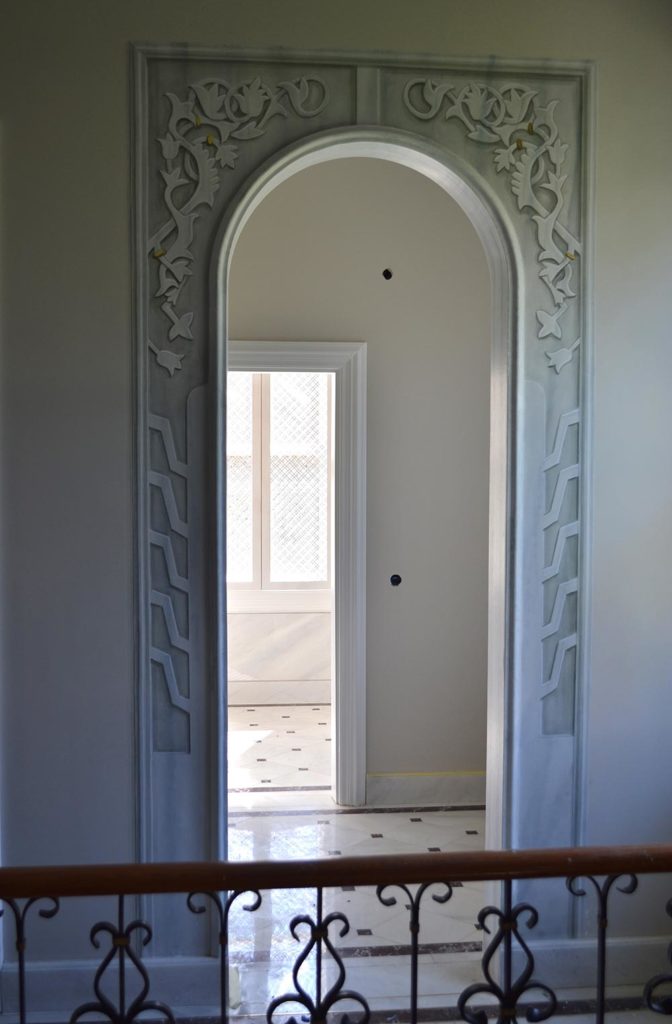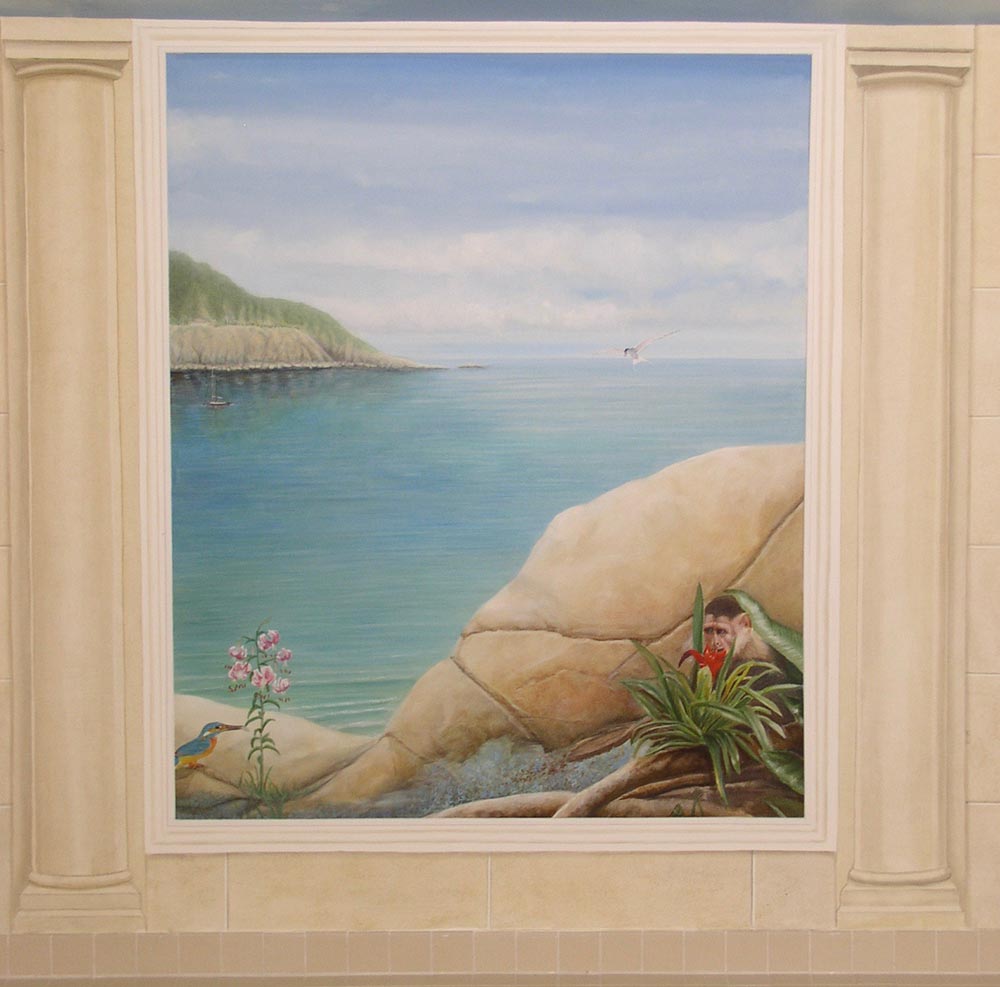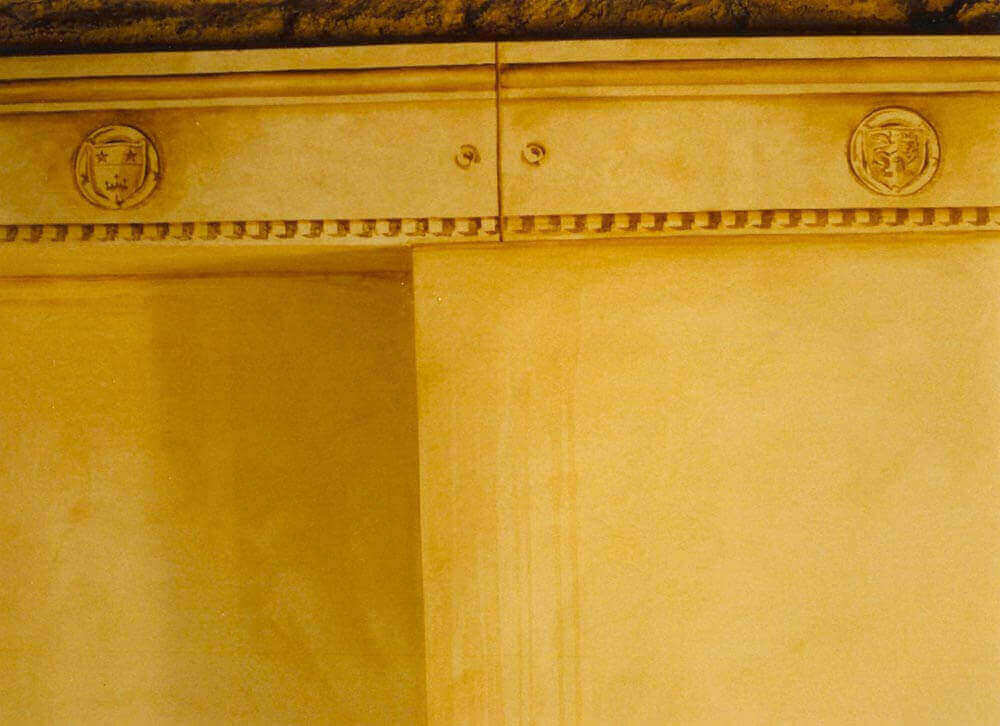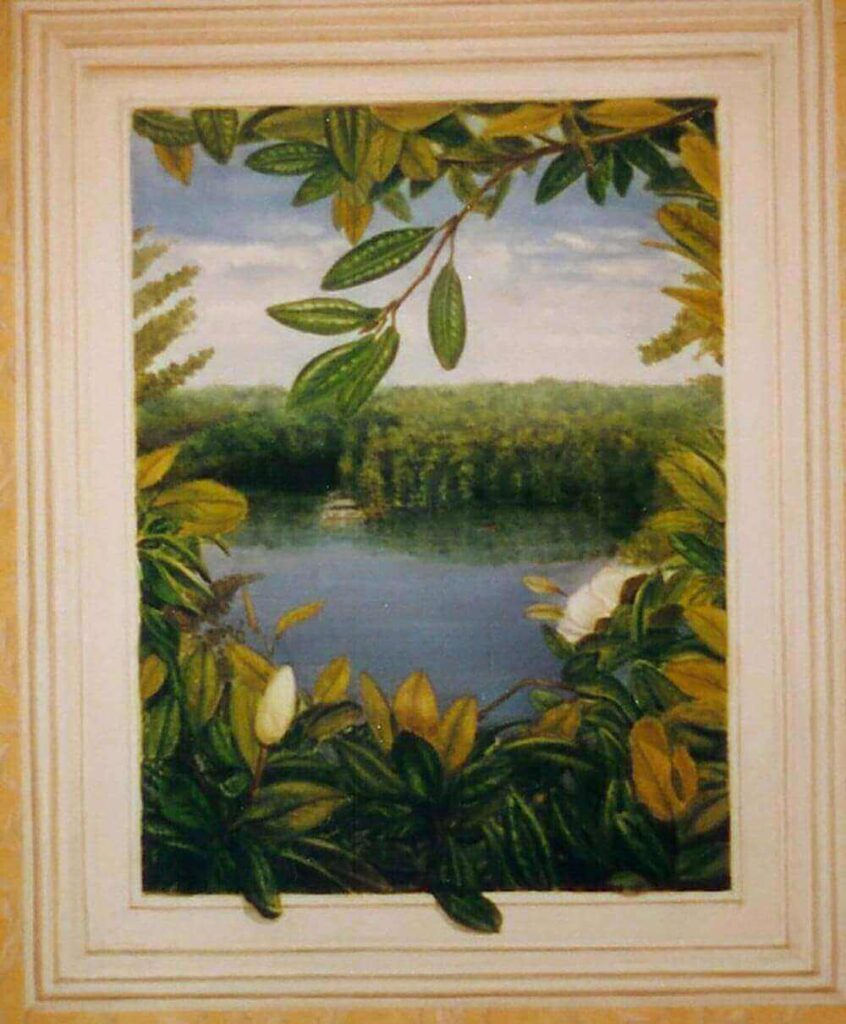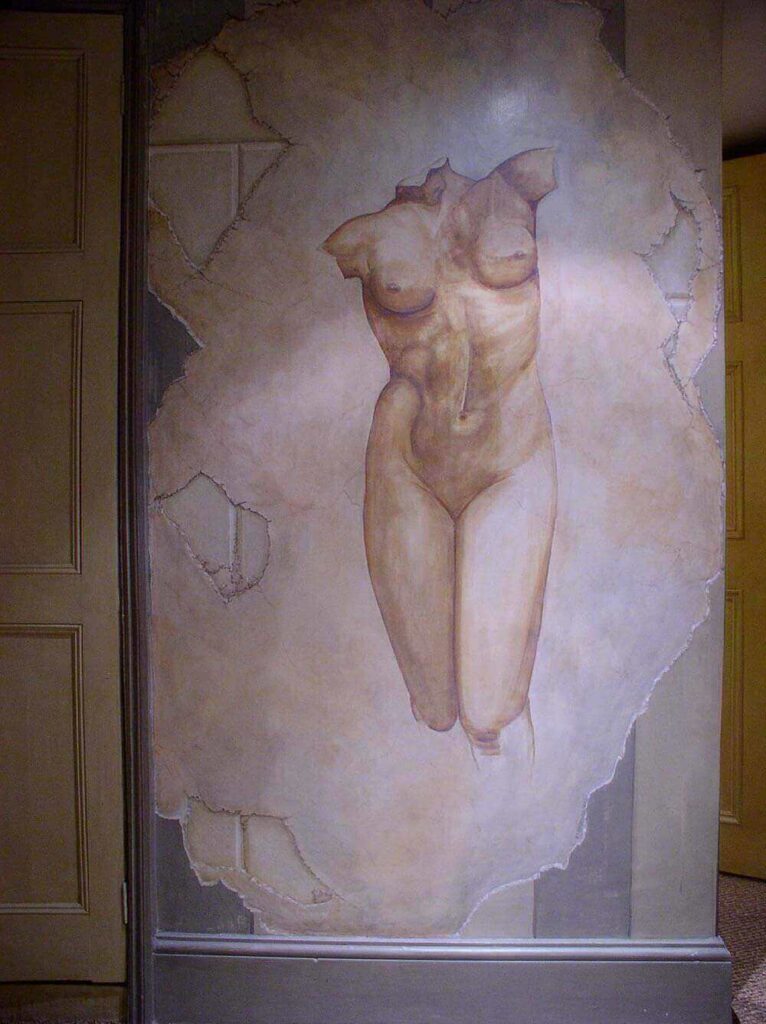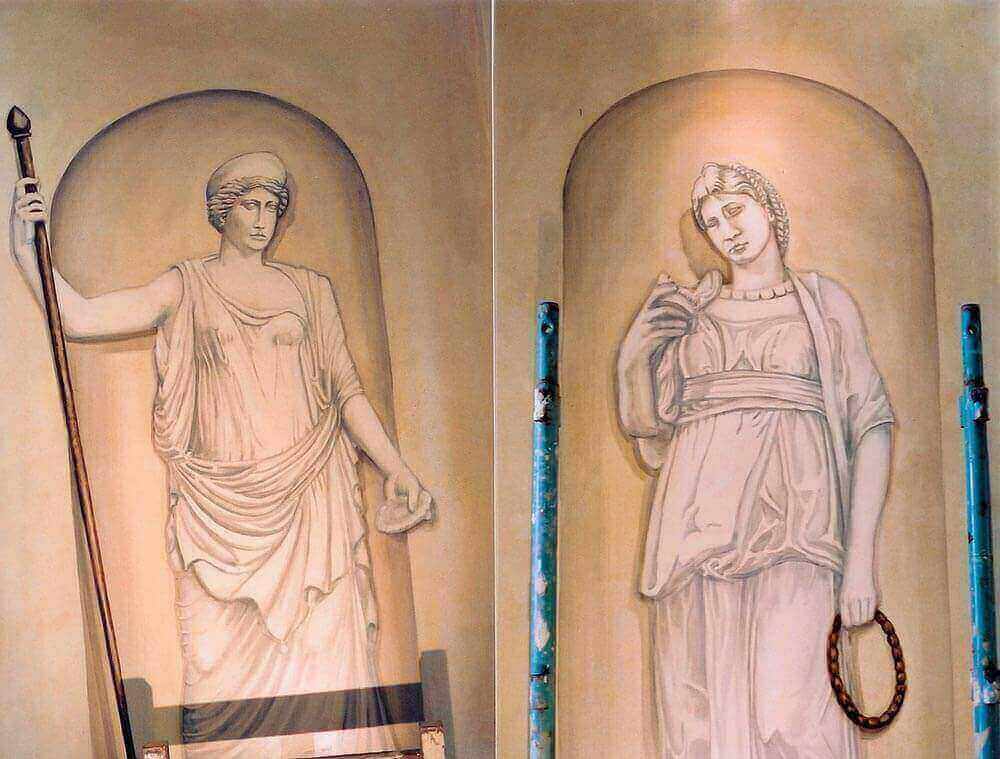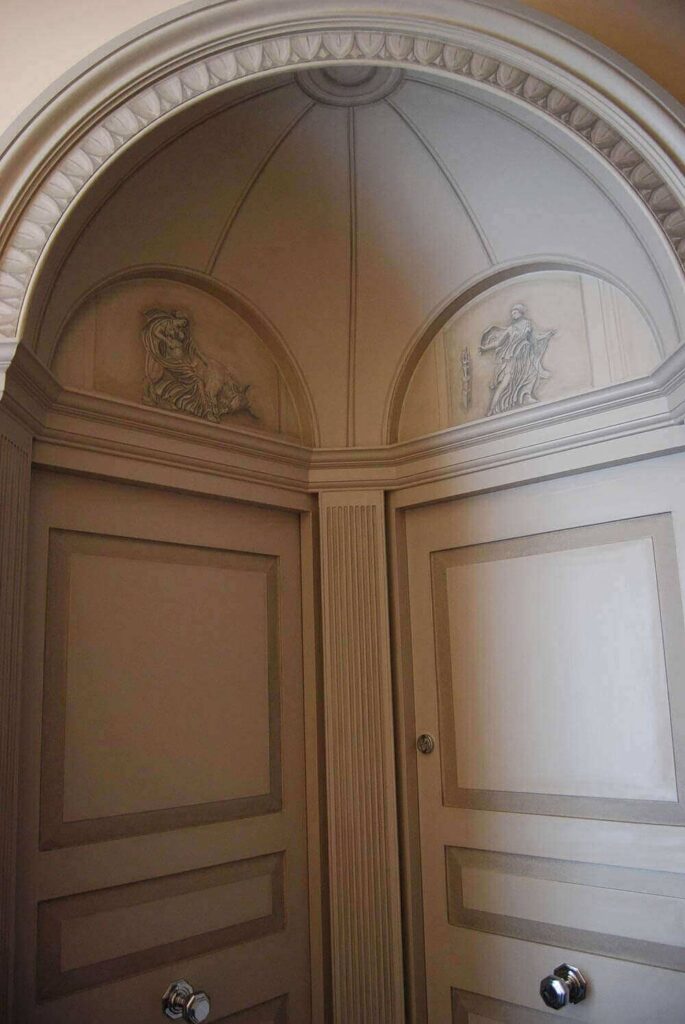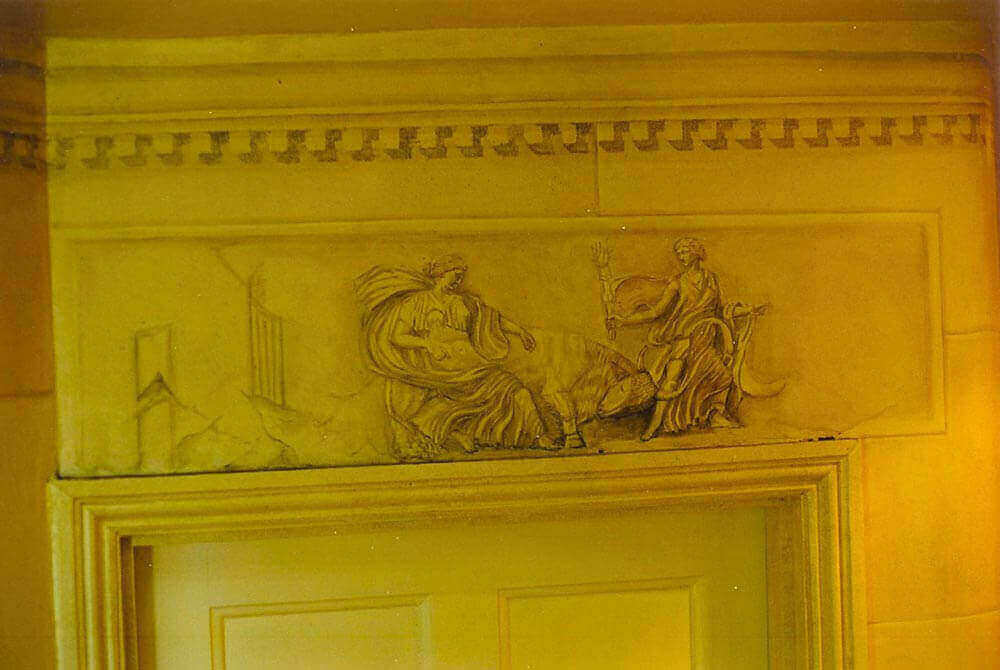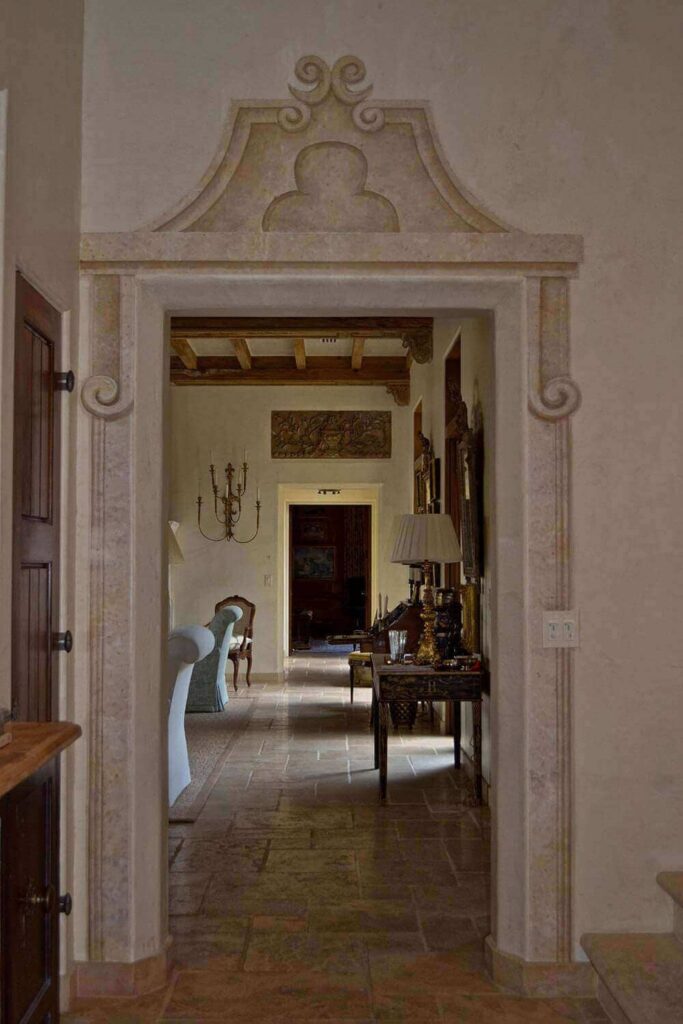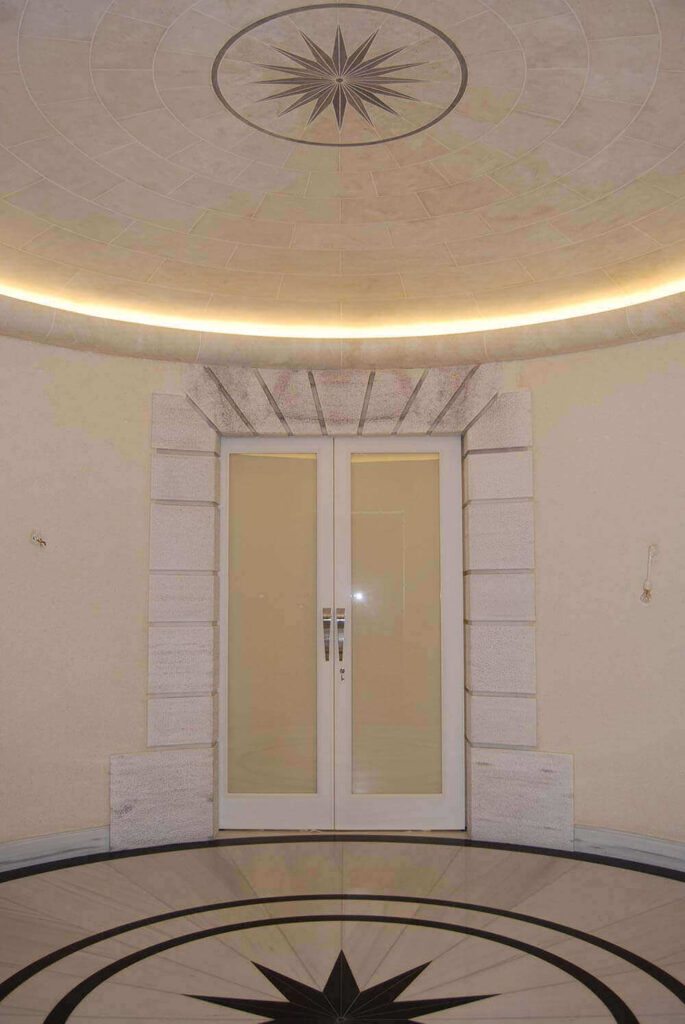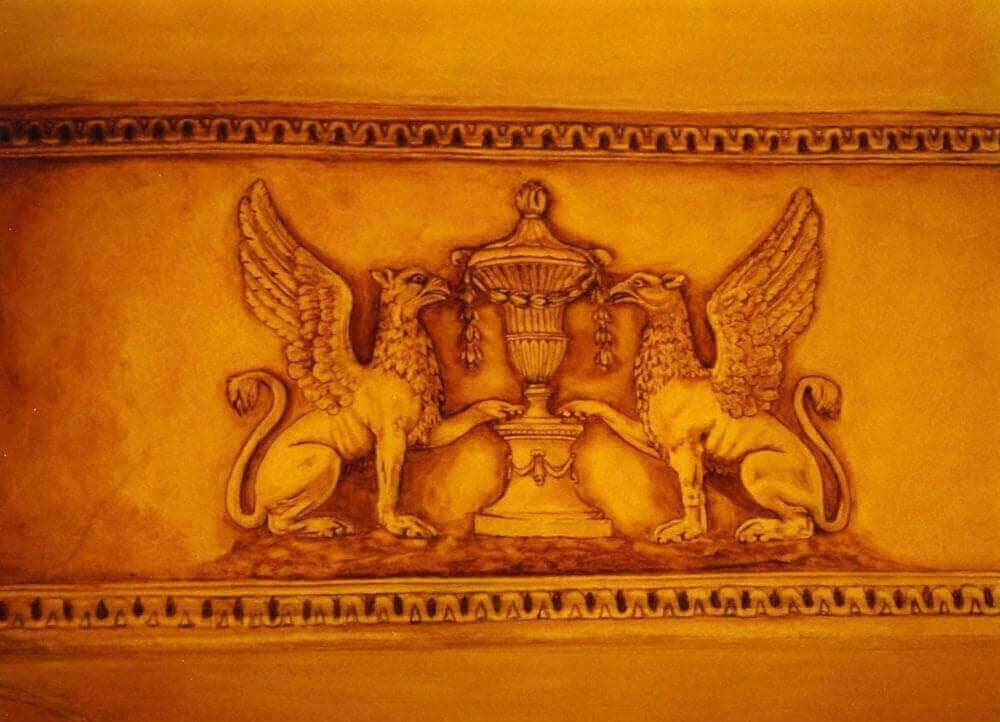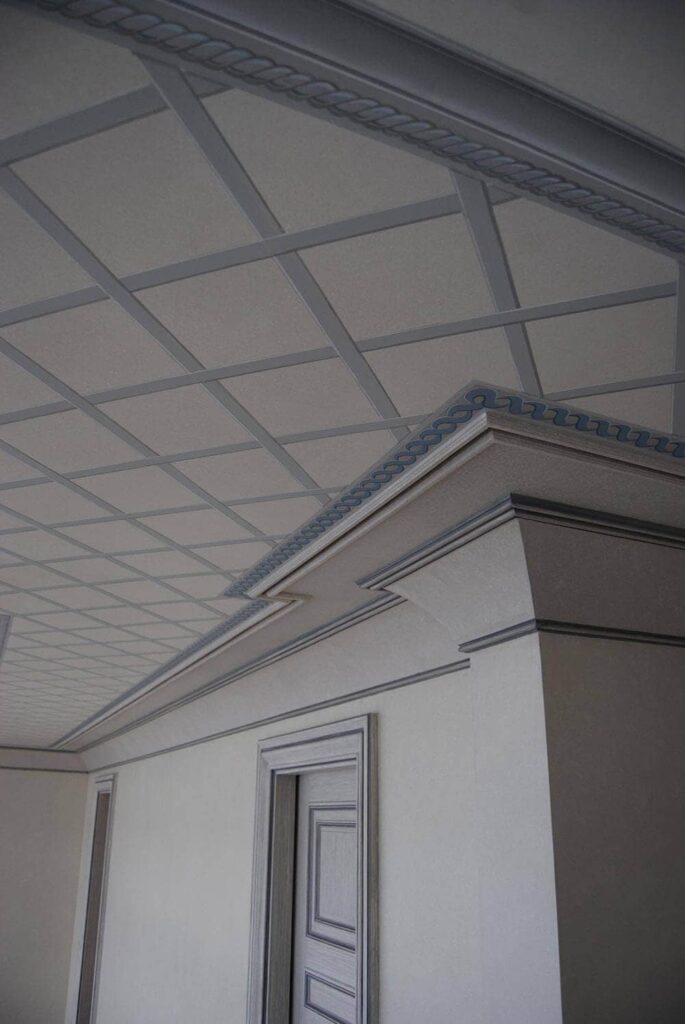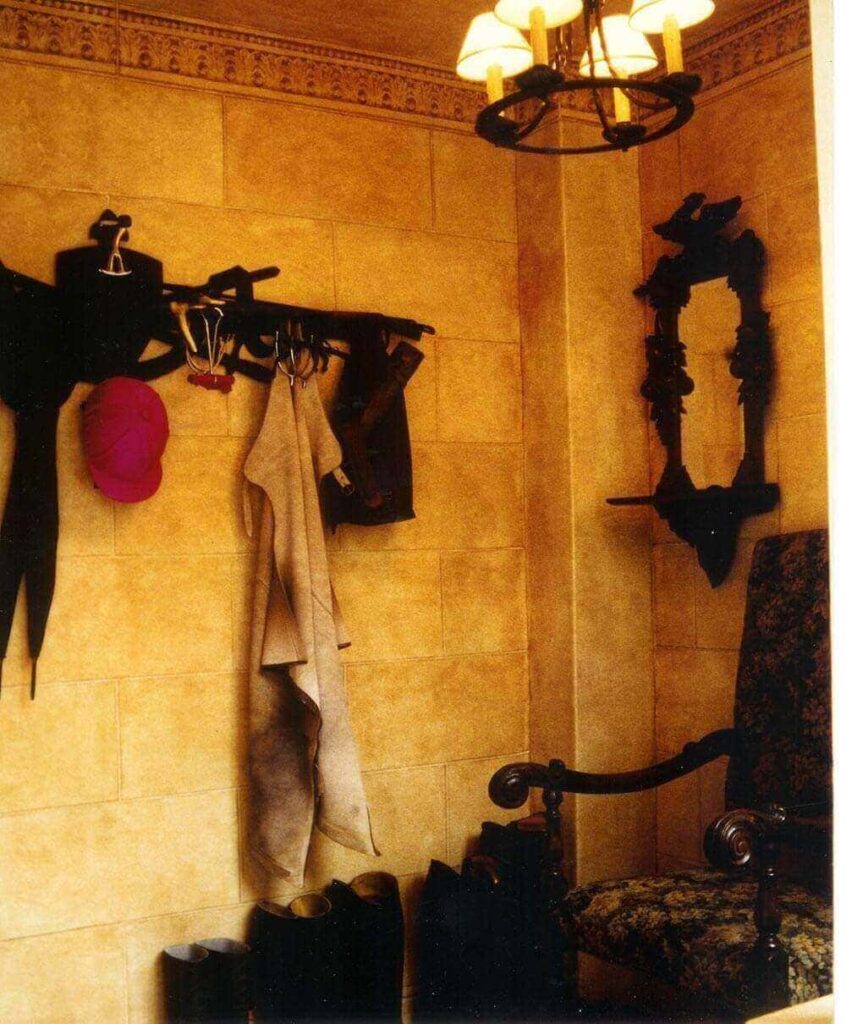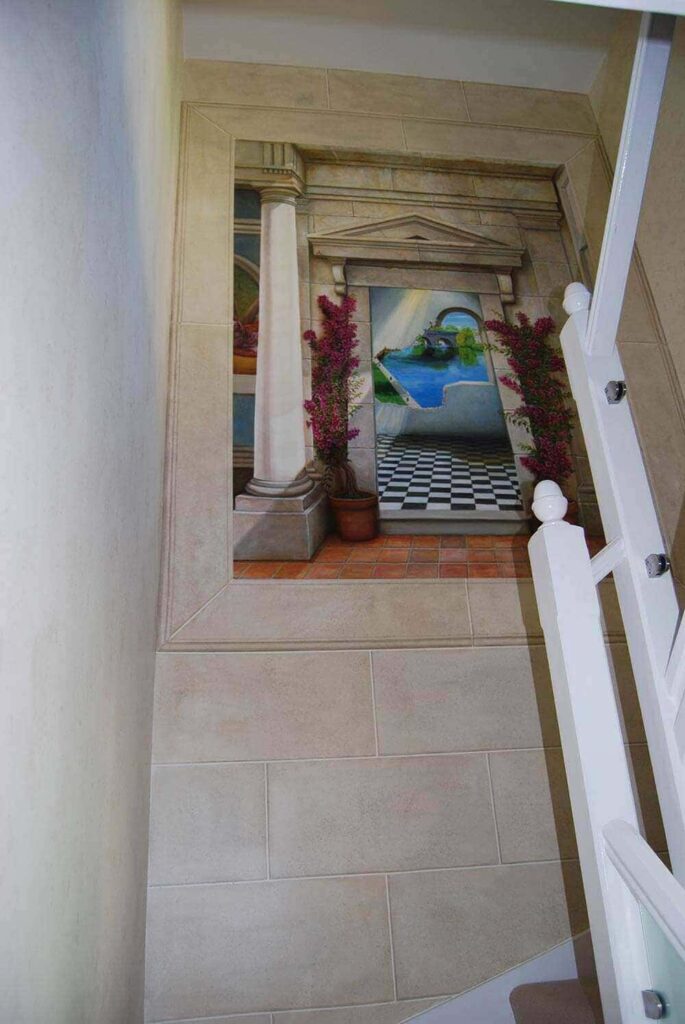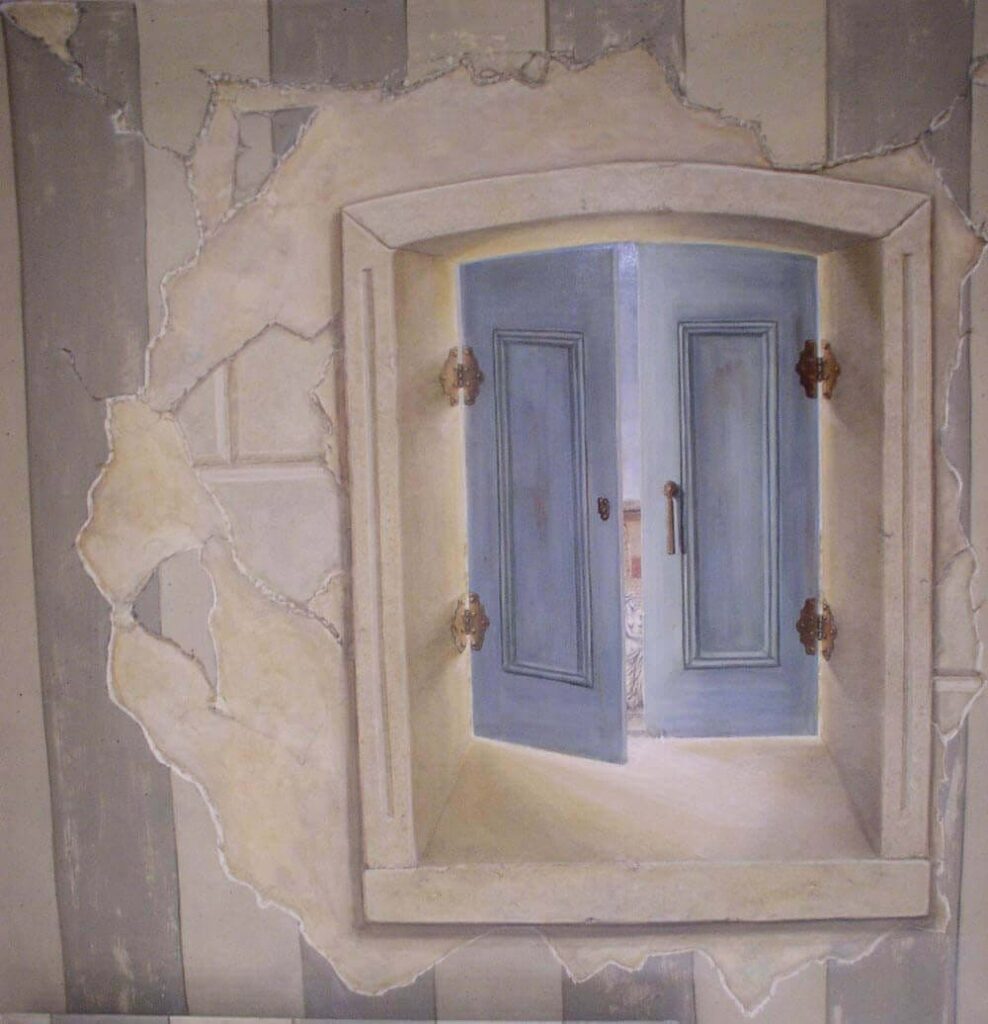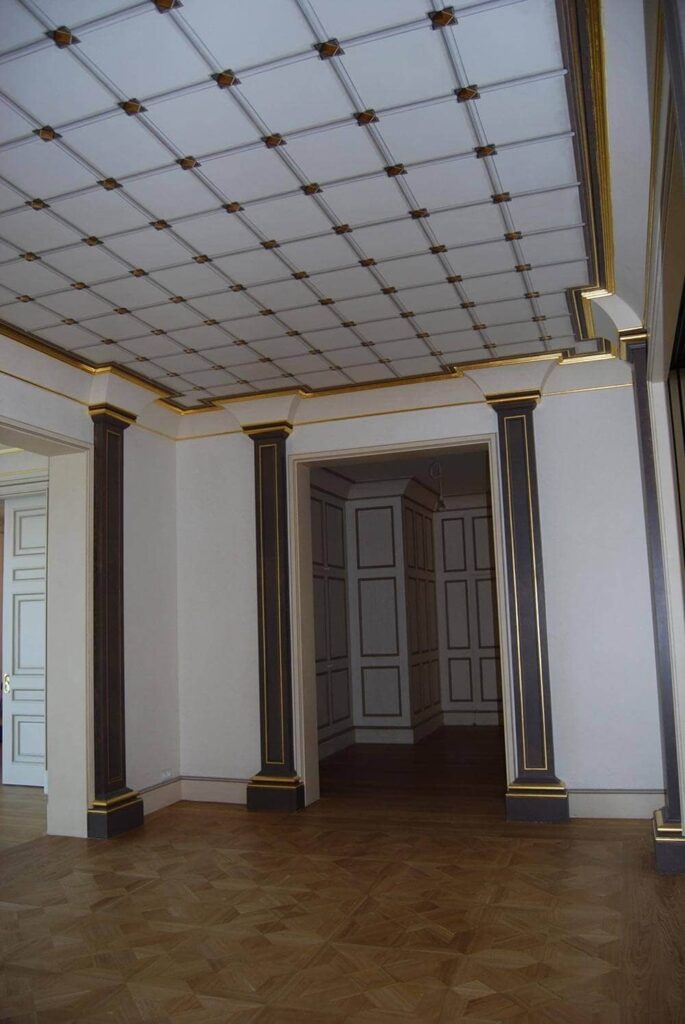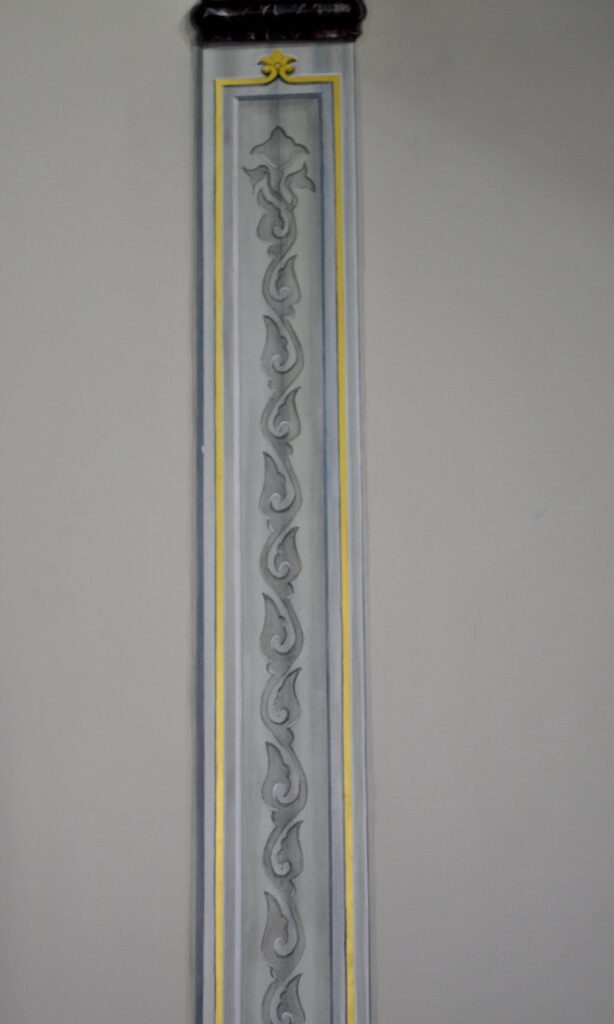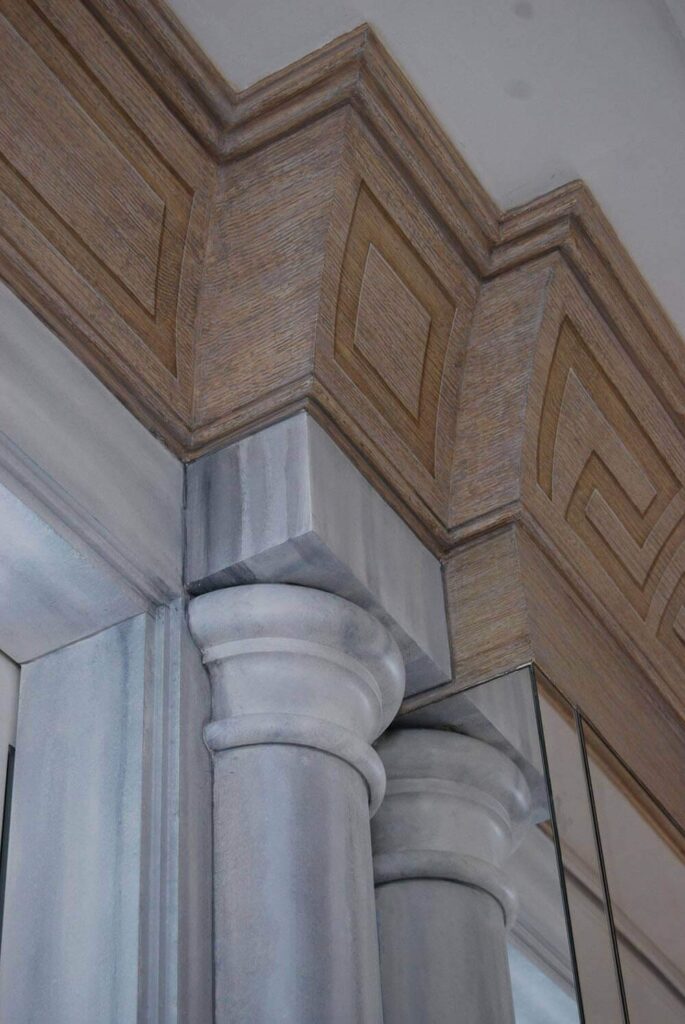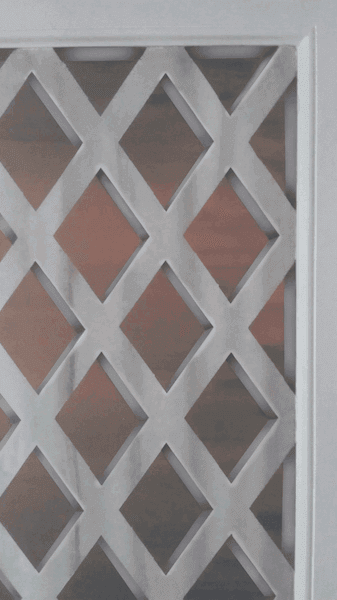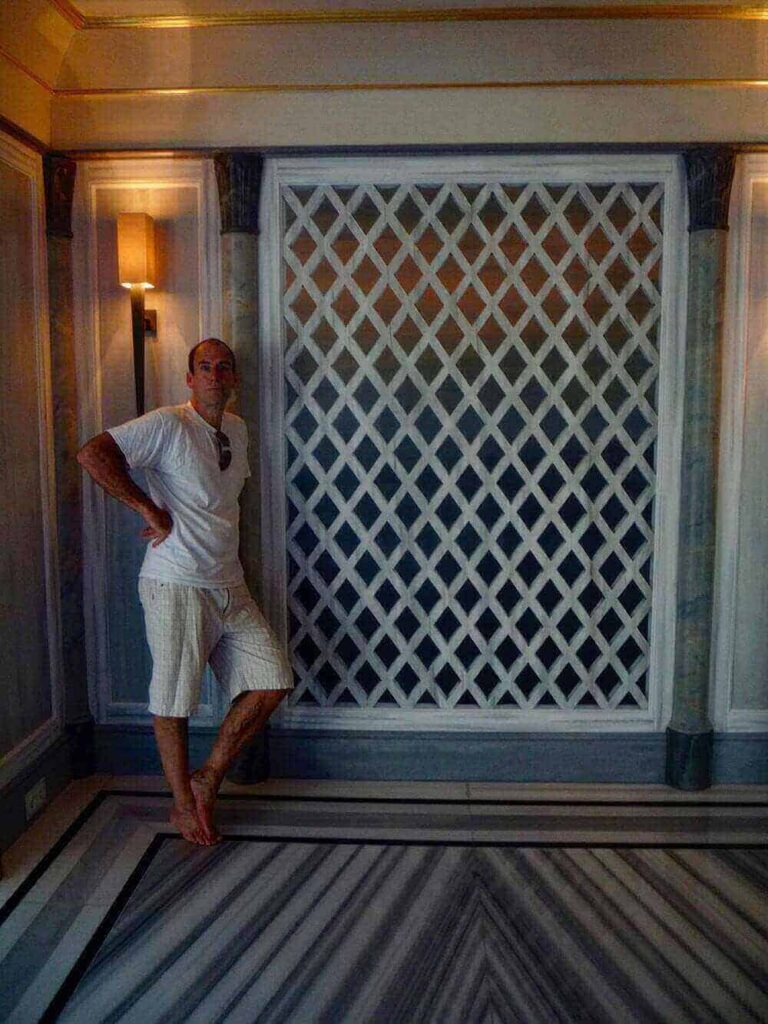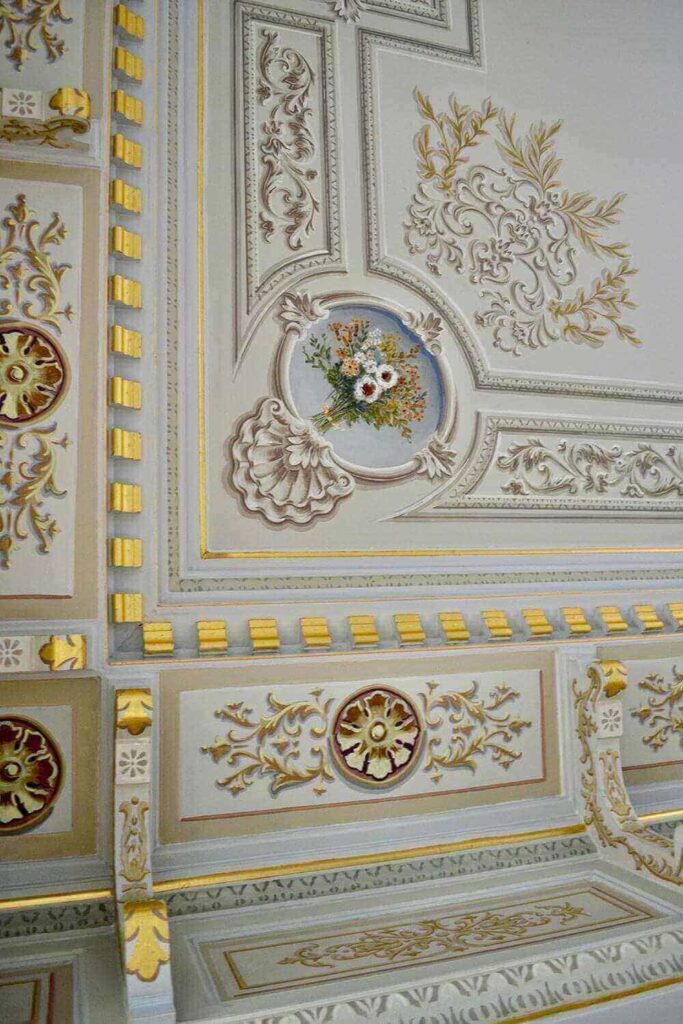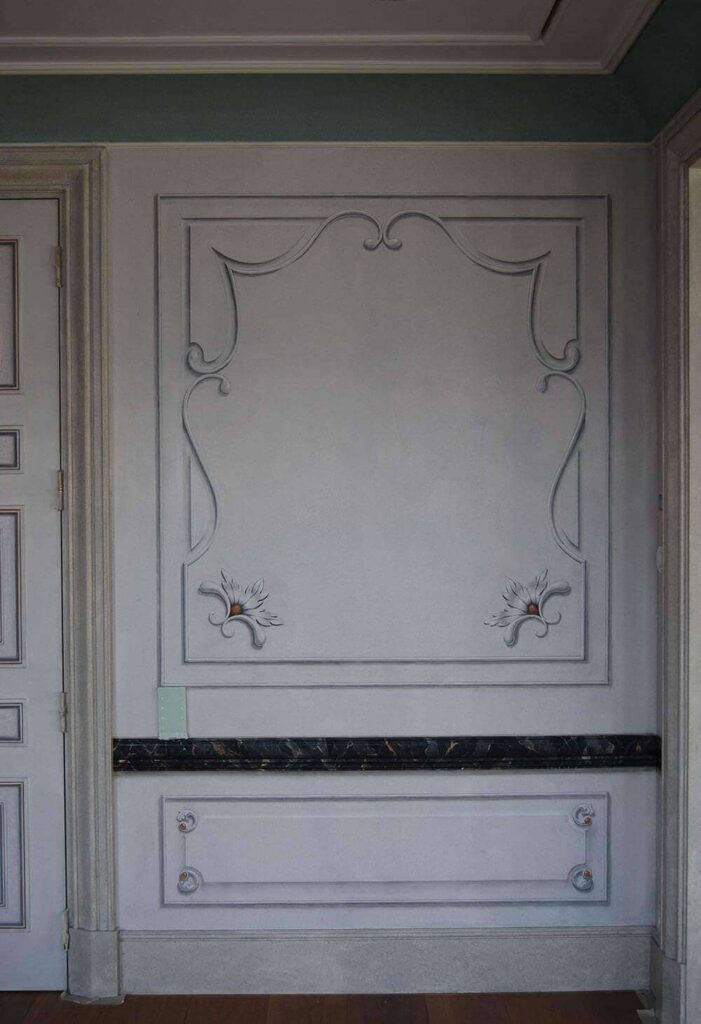Trompe L’oeil is French for tricking the eye, creating visual illusions with paint, it is a study of light and shadow using architecture and other means to give the impression of depth and distance. For example a door opening onto a hidden scene which immediately gives the impression of extended space and a sense of mystery and curiosity at what is happening beyond that door.
Richard Bagguley is one of the very top practicing trompe l’oeil artists and is well known internationally for his trompe l’oeil and mural work. As can be seen in the examples in the trompe l’oeil gallery there are many uses of trompe l’oeil painting, it is employed to create all sorts of decorative and architectural illusions to fool us into thinking what we are seeing is real.
In its simplest form, it is mimicking architectural decorative embellishments, for example, faux panelling, and at its most complicated it can be for example bookcases and shelves with many objects which should be so perfectly rendered that the observer should feel that they could pick them up.
Examples of both these and many more can be seen perfectly illustrated in the murals painted by Richard and his attention to detail sets him apart and his enthusiasm for his art is obvious in the result.
Although the French term Trompe L’oeil was not used until the 19th century the earliest account comes from ancient Greece, where a contest between two prominent artists Zeuxis and Parrhasius. The story goes that Zeuxis painted grapes with such skill that birds flew down to peck at them.
A more contemporary version of a similar story is when my colleague and friend the American trompe l’oeil artist John Pugh painted an enormous sky in a shopping center and netting had to be installed to stop the birds that entered from flying into it and injuring themselves.
As with murals, trompe l’oeil art can be executed directly onto the wall and painted in acrylic or oil paints onto a previously prepared surface, alternatively, the painting can be done in the studio on artificial canvas and shipped to any destination worldwide.
Commissioning a trompe l’oeil painting is the same as murals in that the cost relates to how much detail is in the work which equates to how much time it takes to execute. As a result of a primary discussion Richard can produce detailed sketches and a cost can be given, this can also be adjusted according to the client’s budget.





